Technique & Attitude
Petanque is much more than just a game—it's a discipline that blends precision, strategy, and team spirit. Whether you're a beginner or an experienced player, adopting the right techniques and a respectful attitude can transform both your performance and your enjoyment of the game.
On this page, explore the fundamentals of sportsmanship, refine your movements with practical tips, and learn how to strengthen your grounding, your personal routine, and many other essential elements to help you excel on the field.
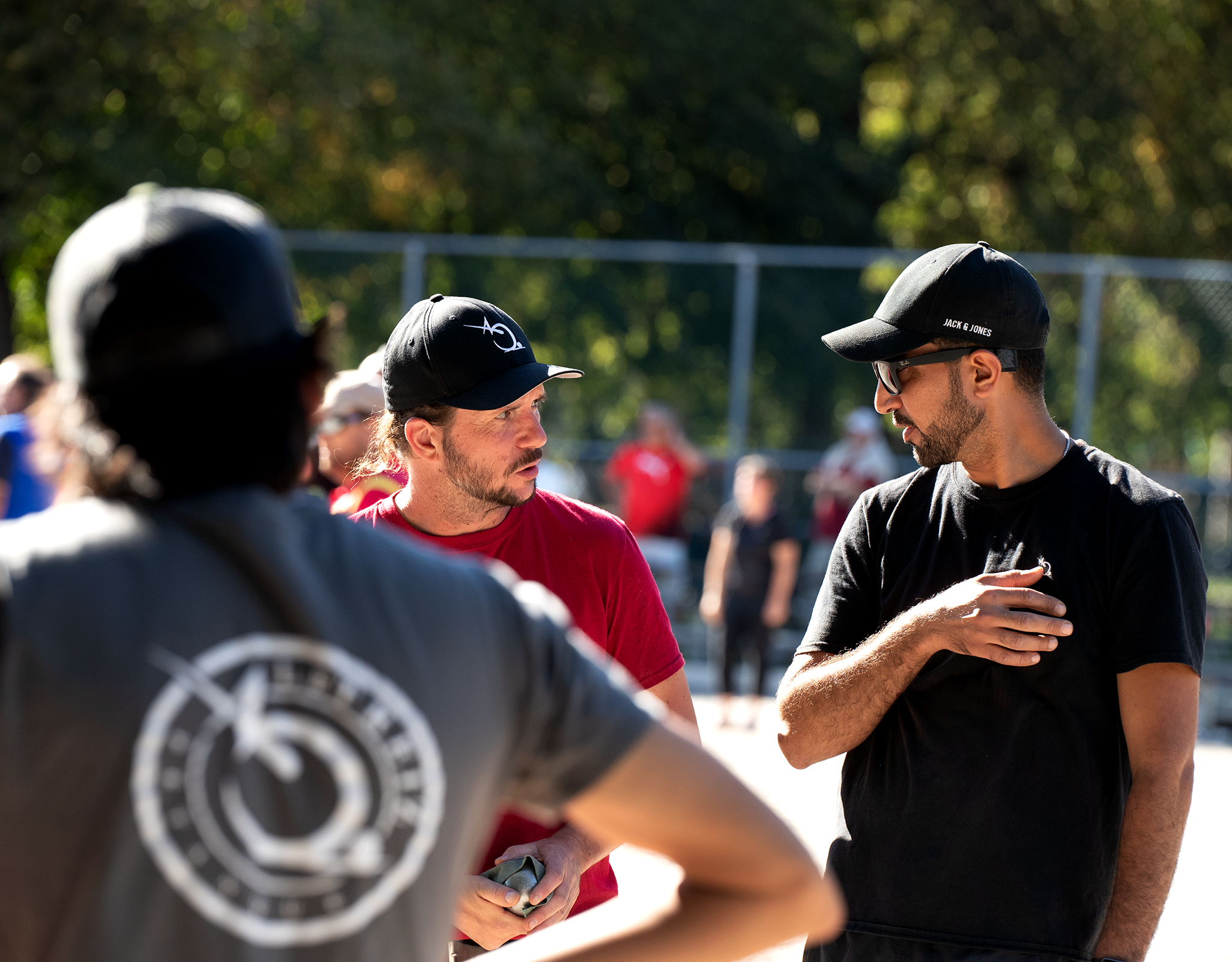
Sportsmanship
Respect is at the heart of petanque, both toward opponents and teammates. It's essential to uphold it in various situations :
• During play : Respect the focus of players in action.
• During strategic discussions : Listen to and value each team member’s ideas.
• In case of disagreements about the rules : Stay calm and open to dialogue.
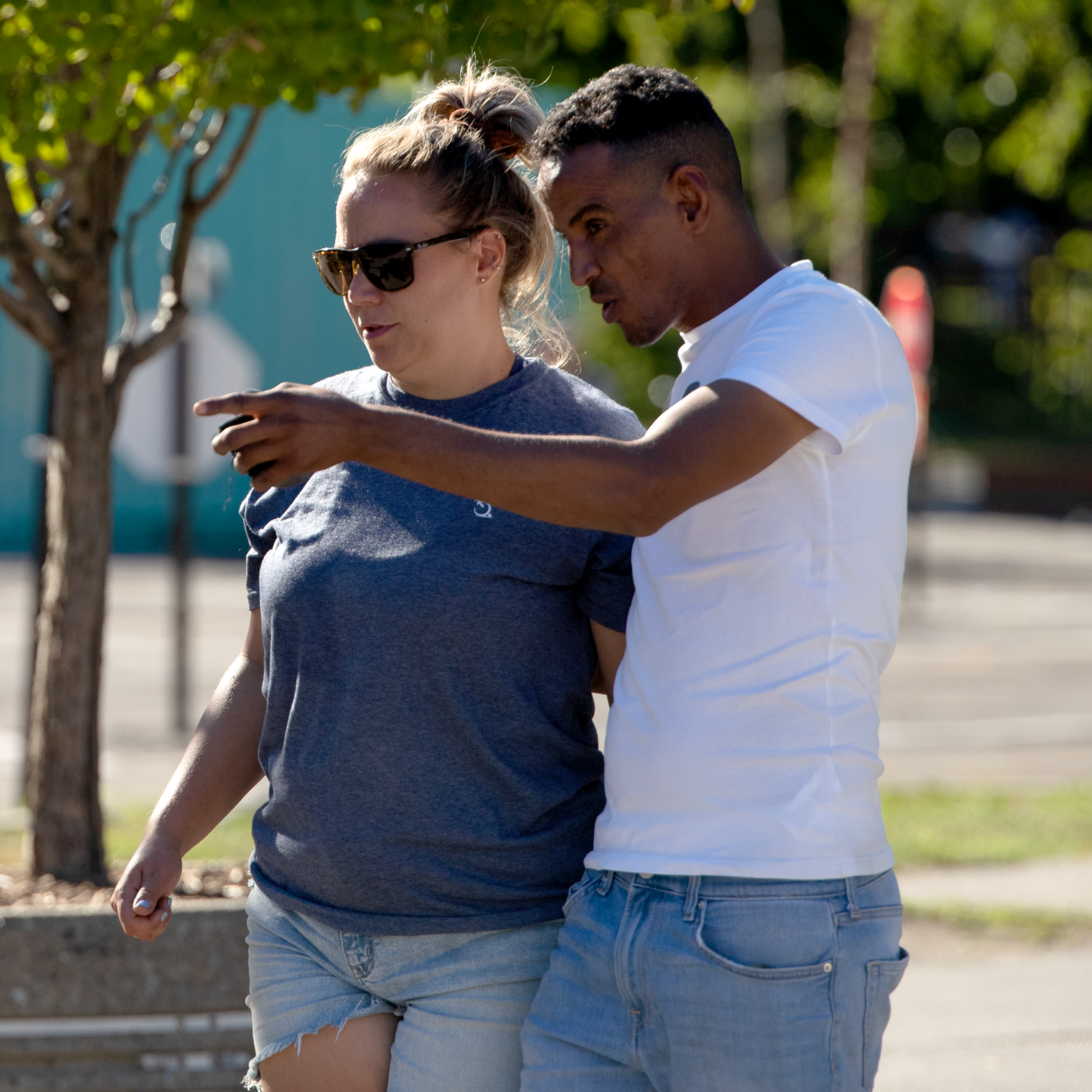
Team Spirit : The Key to Success
The most underestimated aspect of petanque is often team spirit. To succeed, you need to :
• Know your teammates’ strengths and weaknesses.
• Adapt to the different situations that arise during a match.
• Support your teammates, even during challenging moments.

Beware of Negative Reactions !
Showing frustration after a missed shot or point can have negative consequences : Your teammate may struggle to regain focus, tension within the team will increase, the team's overall performance may suffer. Remember, a relaxed player is a better player. Encourage your teammates instead of criticizing them.
The Ritual
Another very important aspect of petanque is developing a personal routine, both for pointing and shooting. This will greatly help you get into the right mindset and reach the level of focus needed to execute your move properly.
Some players prefer to go and inspect the spot where the boules will land or the target boule before playing, while others head straight to the circle to take their shot. High-level players typically enter the circle the same way every time, creating a routine that helps condition their brain for the action ahead.
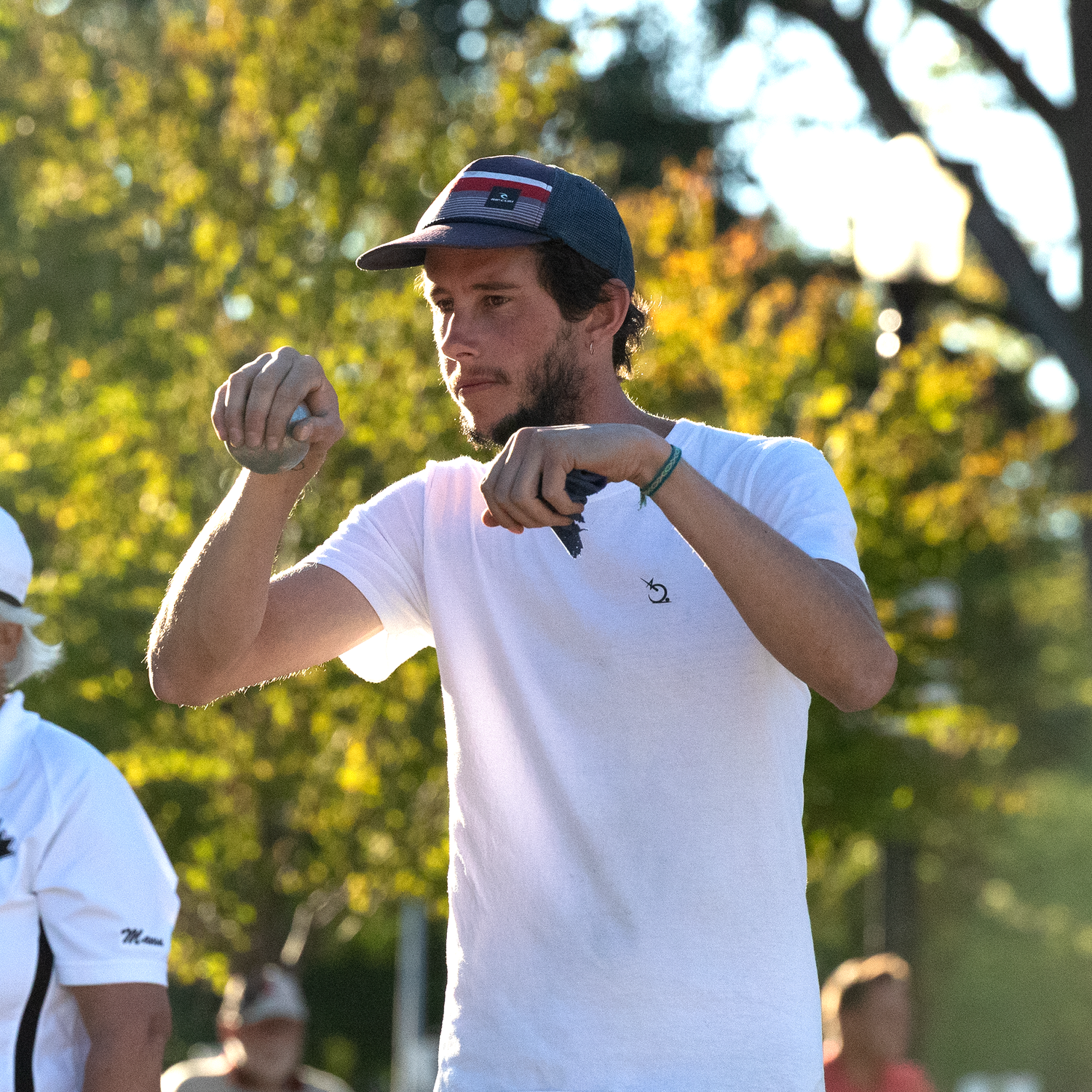
Once in the Circle
It is essential to breathe properly, stay calm, and visualize the path you want the boule to take.
The final step is to focus solely on the target, adopting a tunnel vision—much like racehorses with blinders.
Ground Anchoring
Your stance in the circle is crucial for successful pointing and shooting. For optimal posture, position your front foot (the right foot for a right-handed player) toward the target. Avoid placing the opposite foot (relative to your throwing arm) in front, as it would hinder the natural forward motion of your throw.
Make sure to keep your feet firmly grounded until the boule makes contact with the field—stability is key. To achieve it, focus on the sensation of your heels and toes pressing into the ground during the gesture, while lowering your center of gravity just below your navel. This technique will help stabilize your entire movement.
Here are different ways to position your feet in the circle :
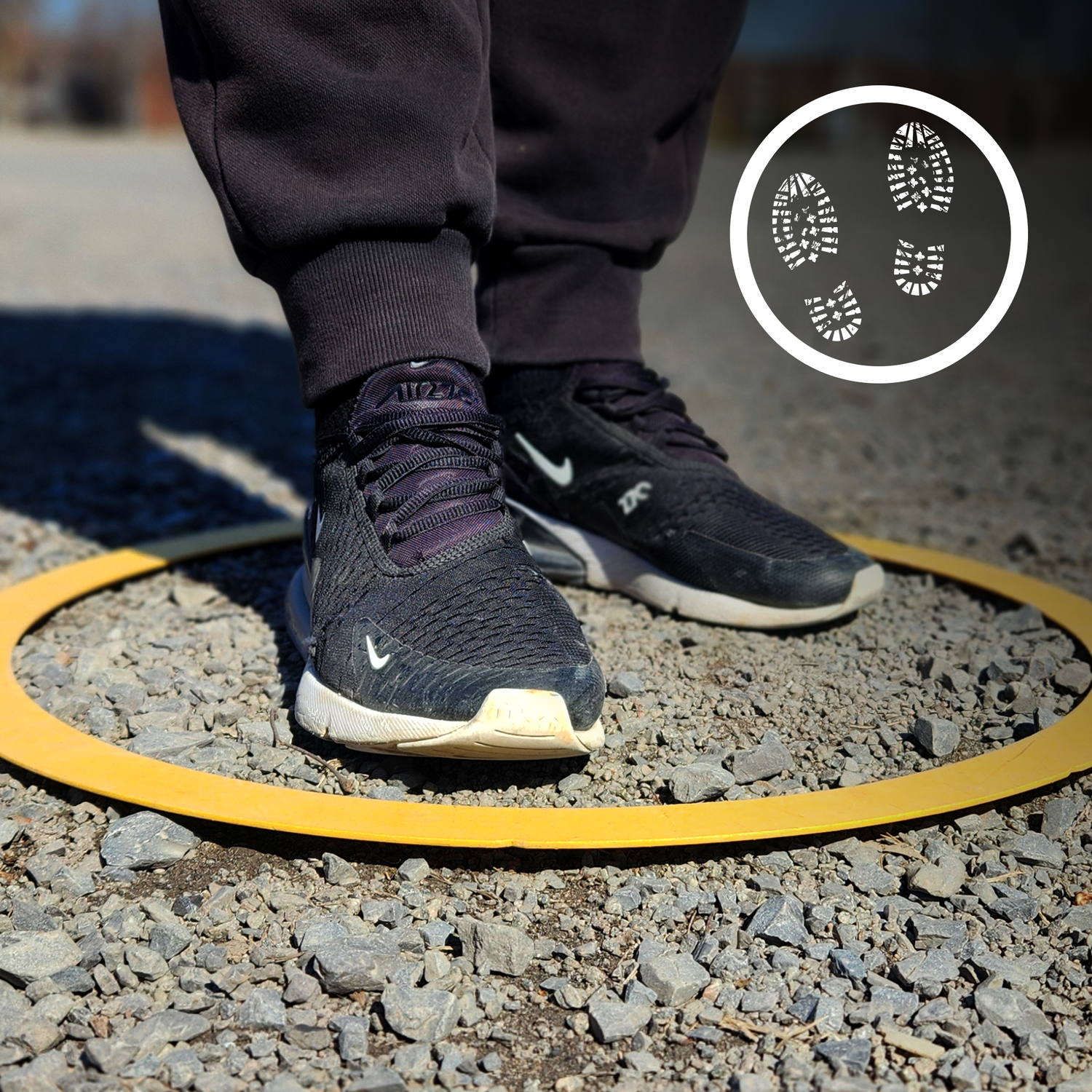
Foot Forward
Your dominant foot is slightly forward of the other, keeping the two parallel. This foot position helps keep the pendulum in line with the playing axis.
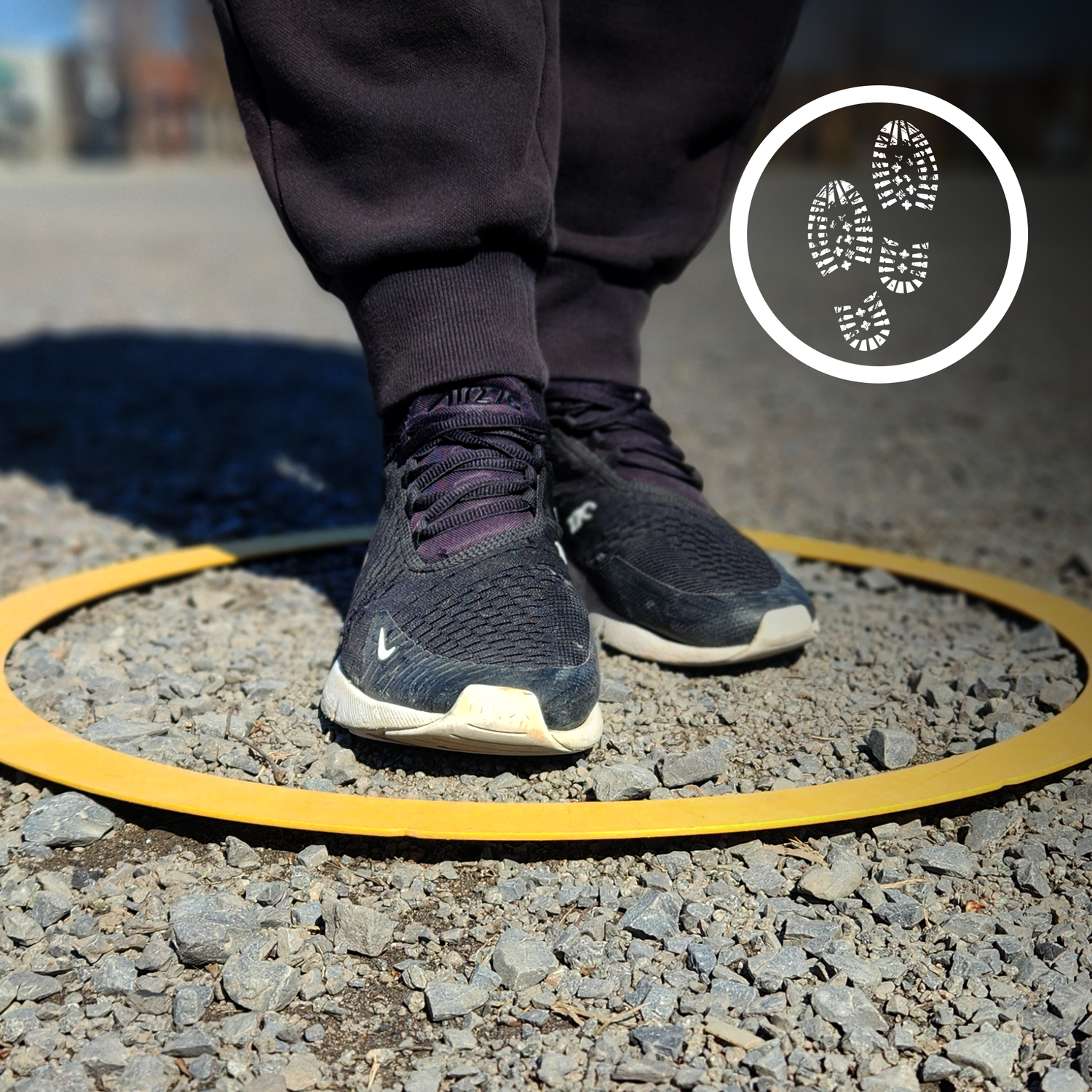
Feet Together / Tight Stance
This foot positioning helps maintain an upright posture while performing the pendulum motion. However, this technique requires good balance.
Example of a player using this technique :
• Dylan Rocher (France)
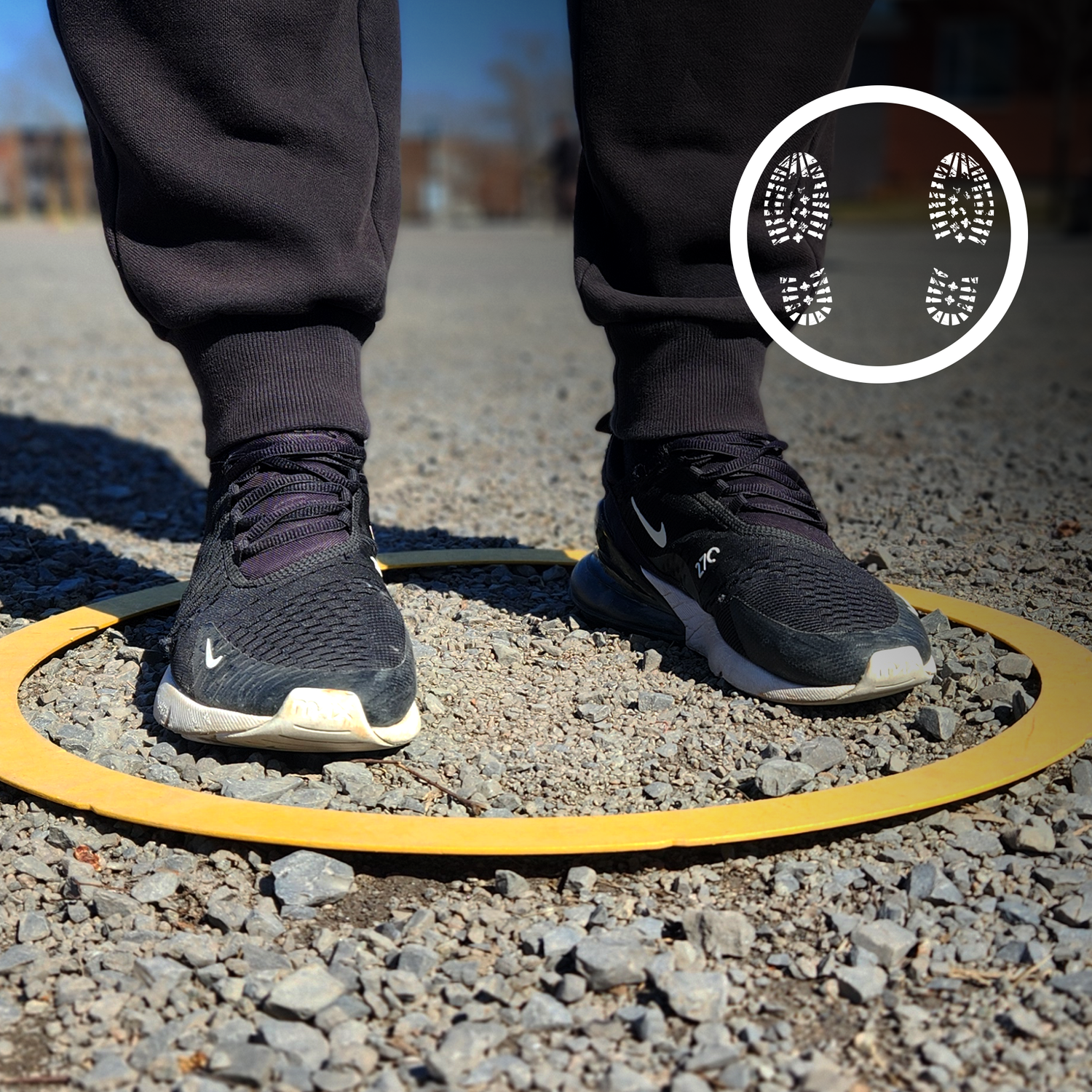
Feet Apart
Spreading the feet can improve balance for some players, but it makes the pendulum motion harder to execute.
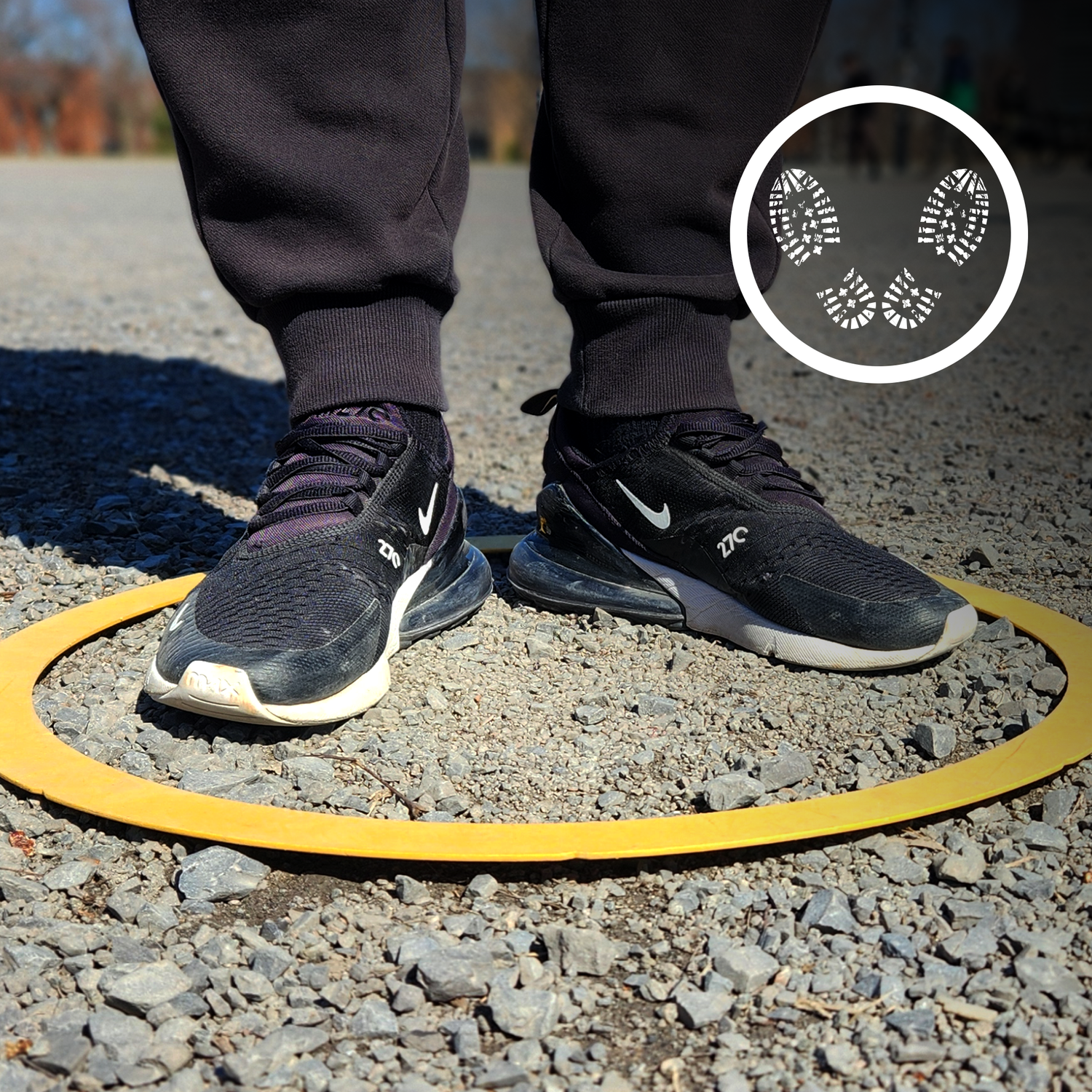
Feet Angled
The feet are positioned perpendicularly (in a "V" shape), providing good stability and making the pendulum motion easier.
Example of a player using this technique :
• Christian Fazzino (France)
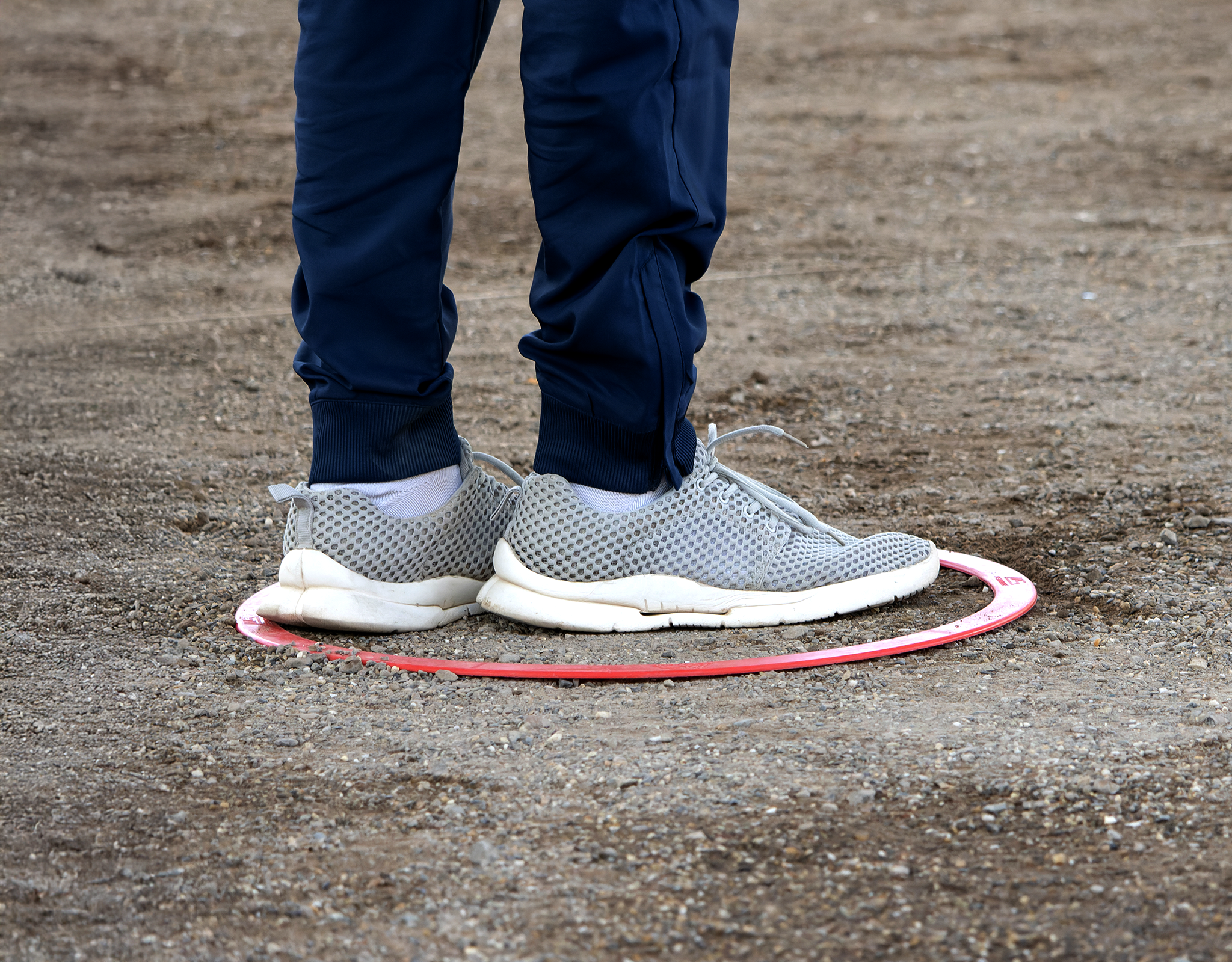
It is through regular practice that you will discover your ideal throwing stance.
However, keep these essential rules in mind : both of your feet must remain inside the throwing circle and be in contact with the ground at the moment your boule touches the ground, another boule, or the jack.
The squatting position
When pointing, some players adopt the squatting position for several reasons : to throw with less force, at a lower height, and for a shorter distance than when standing, or simply to better analyze the imperfections of the field.
Pointing requires excellent stability. Many players avoid squatting to avoid losing that balance. The most difficult part at first is finding a stable position, which is crucial.
It is important to note that this position is more tiring than the standing position, and for long-distance pointing, it is preferable to choose a standing stance.
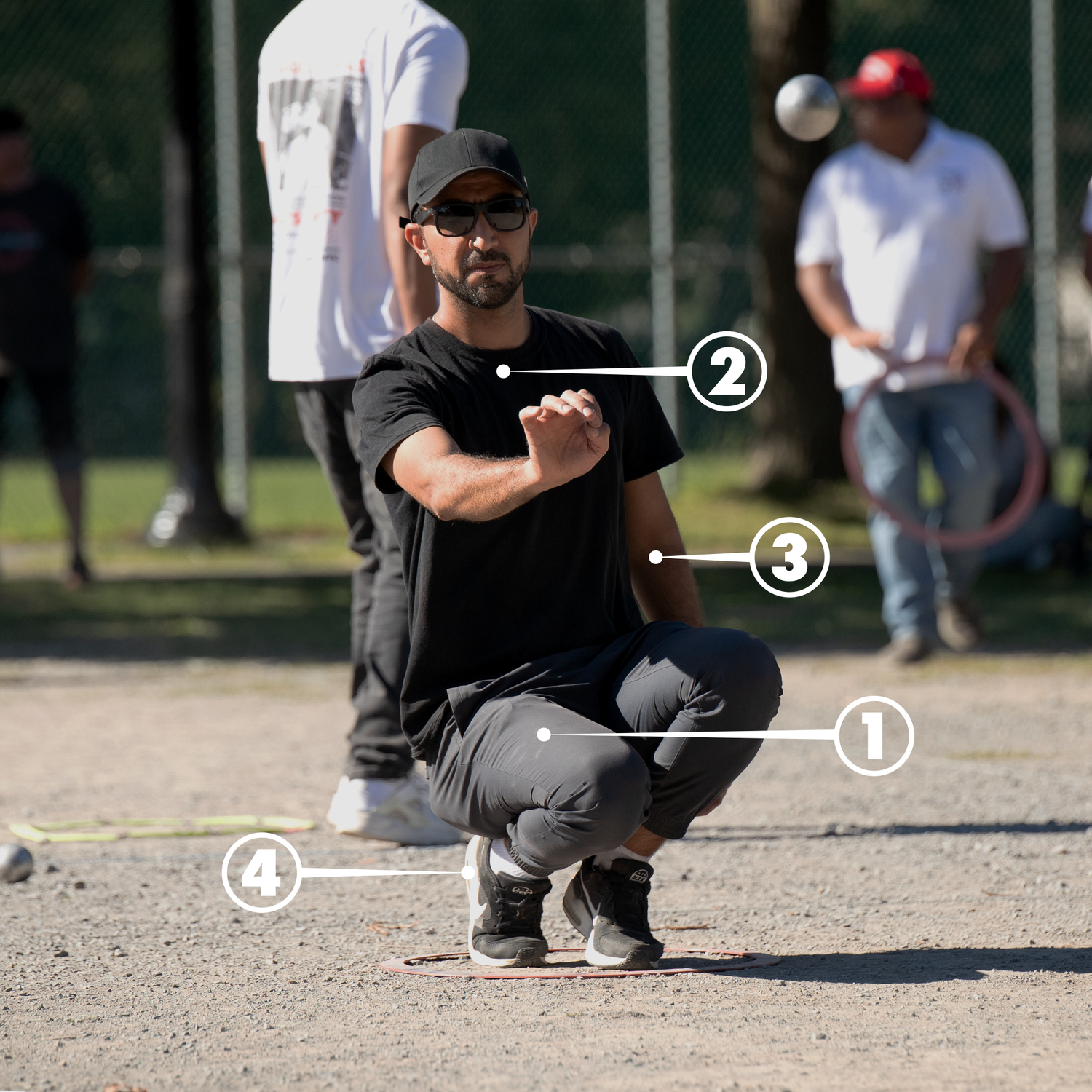
Here are some tips for a good squatting position :
1. The thighs are horizontal.
2. The torso and shoulders are straight.
3. The counterbalancing arm can be extended in line with the shoulders to improve balance.
4. The heels do not rest on the ground. It is recommended to adopt a position where the heels are locked against each other to increase stability.
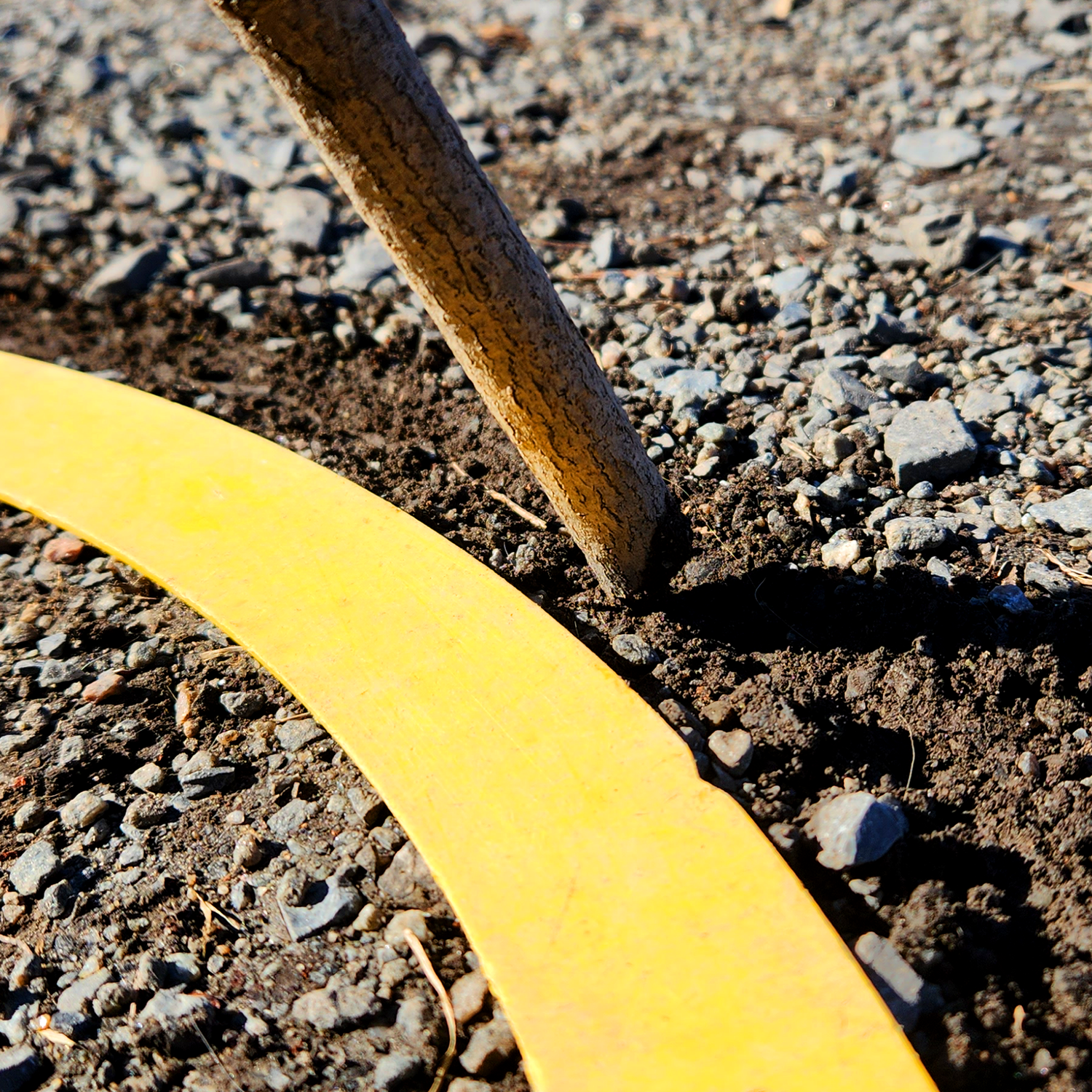
Notes :
• It is important to clearly mark the position of the circle once it is placed on the ground. This provides a reference point in case the circle is accidentally moved.
• It is possible to clean the inside of the circle with your foot to achieve better footing. However, it is important to restore the ground to its original state once the end is finished.
The Grip of the Boule
The most important thing is to choose a boule that fits the size of your hand and your preferences.
We recommend visiting our "Choose your Boules Wisely" page to find the correct diameter and ensure an optimal grip.
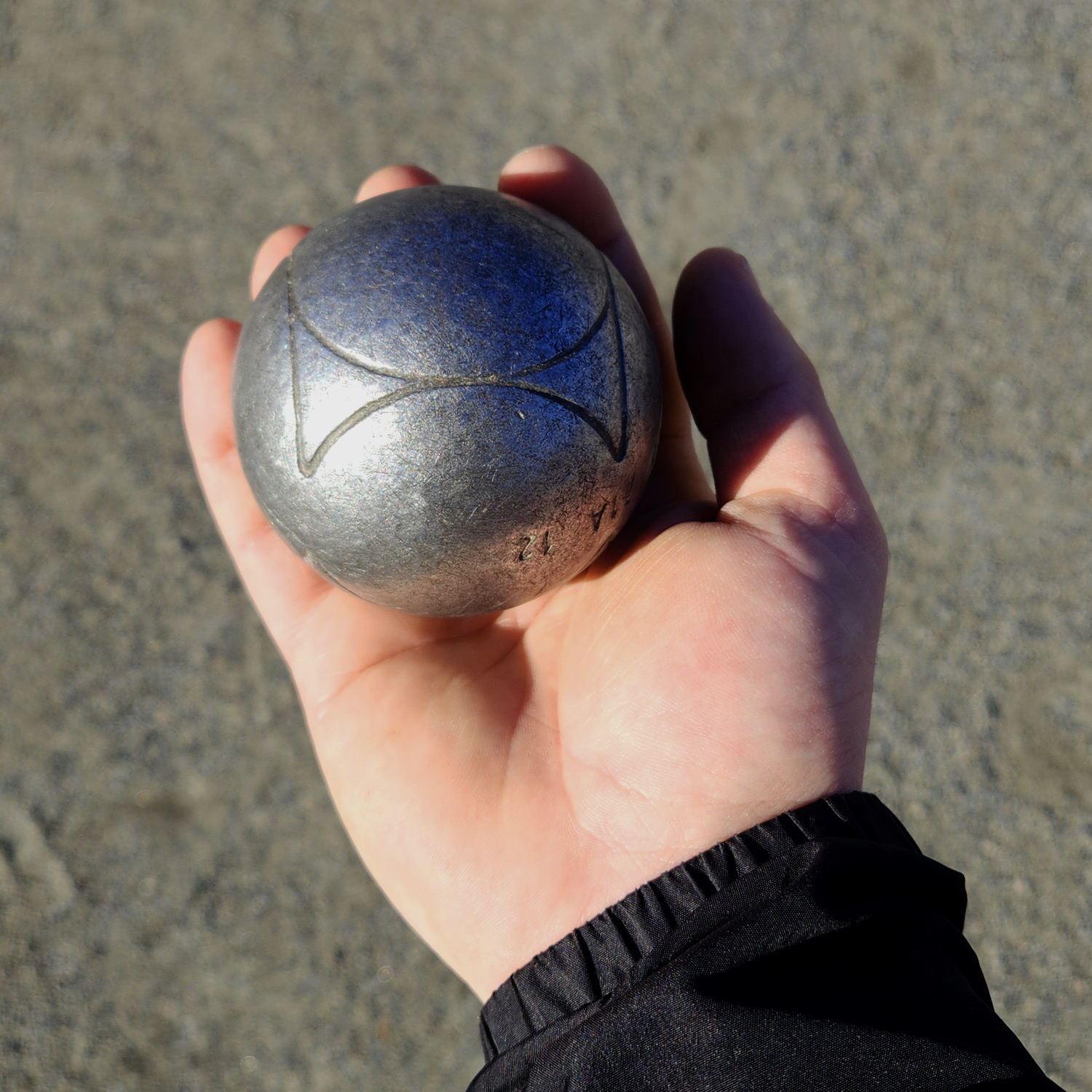
Hold the boule, making sure your fingers are not too spread apart.
The tip of the thumb should almost touch the index finger, without supporting the boule. The boule should be held in the fingers, without tension.
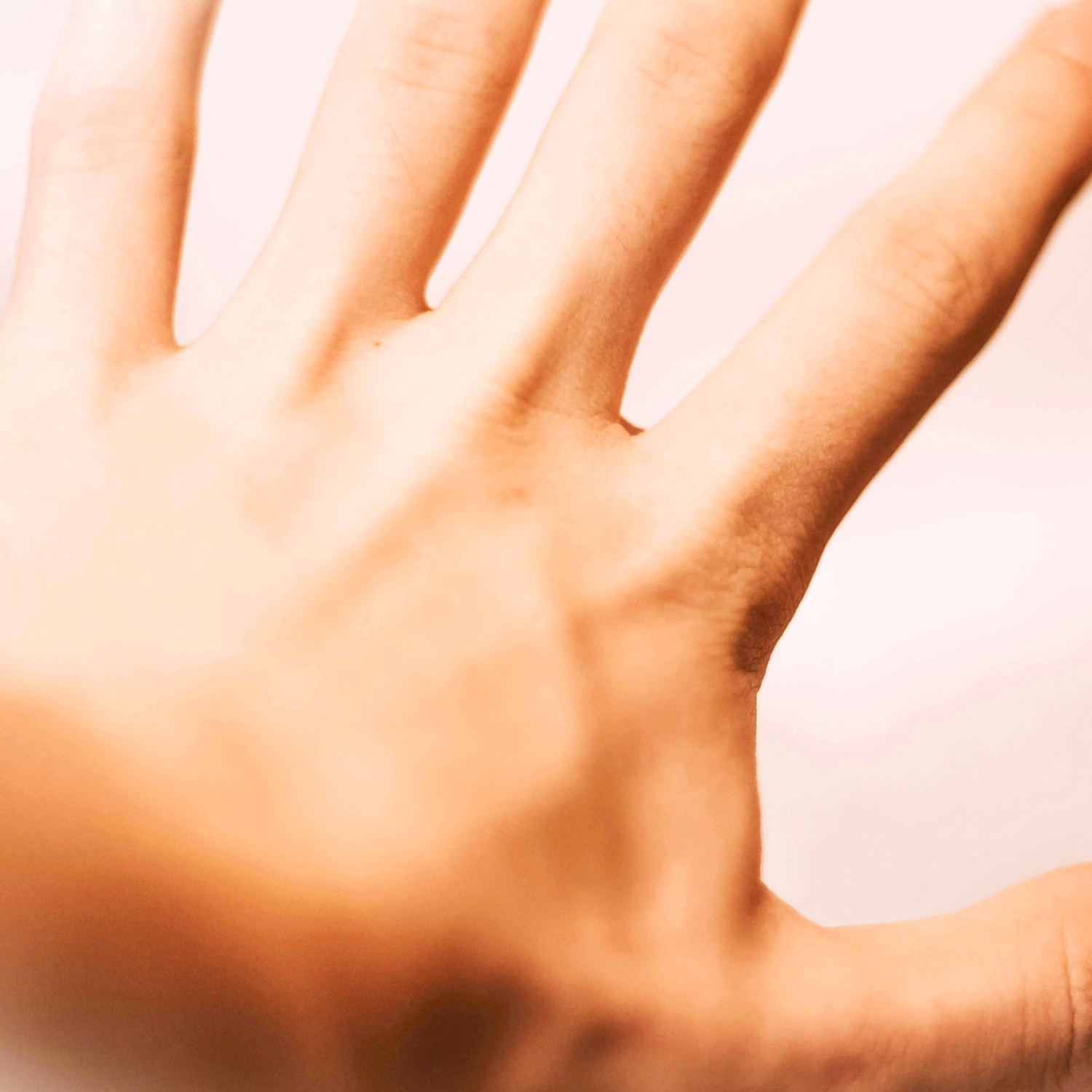
To improve your feel, it is important to work on your hands.
Here are some simple exercises :
• Rub your wrists : Massage your wrists with movements like you are washing your hands.
• Warm up your hands : Keep rubbing your hands together until they are nice and warm.
• Massage your fingers : With the index and middle fingers of the other hand, grasp one finger and gently pull on it while massaging it. Repeat for each finger.
There are many other exercises to work on your hands, wrists, and forearms, but these simple movements are a great starting point.
The Throwing Motion
Many petanque players struggle to properly synchronize their movements during the throw, which leads to errors in direction and distance.
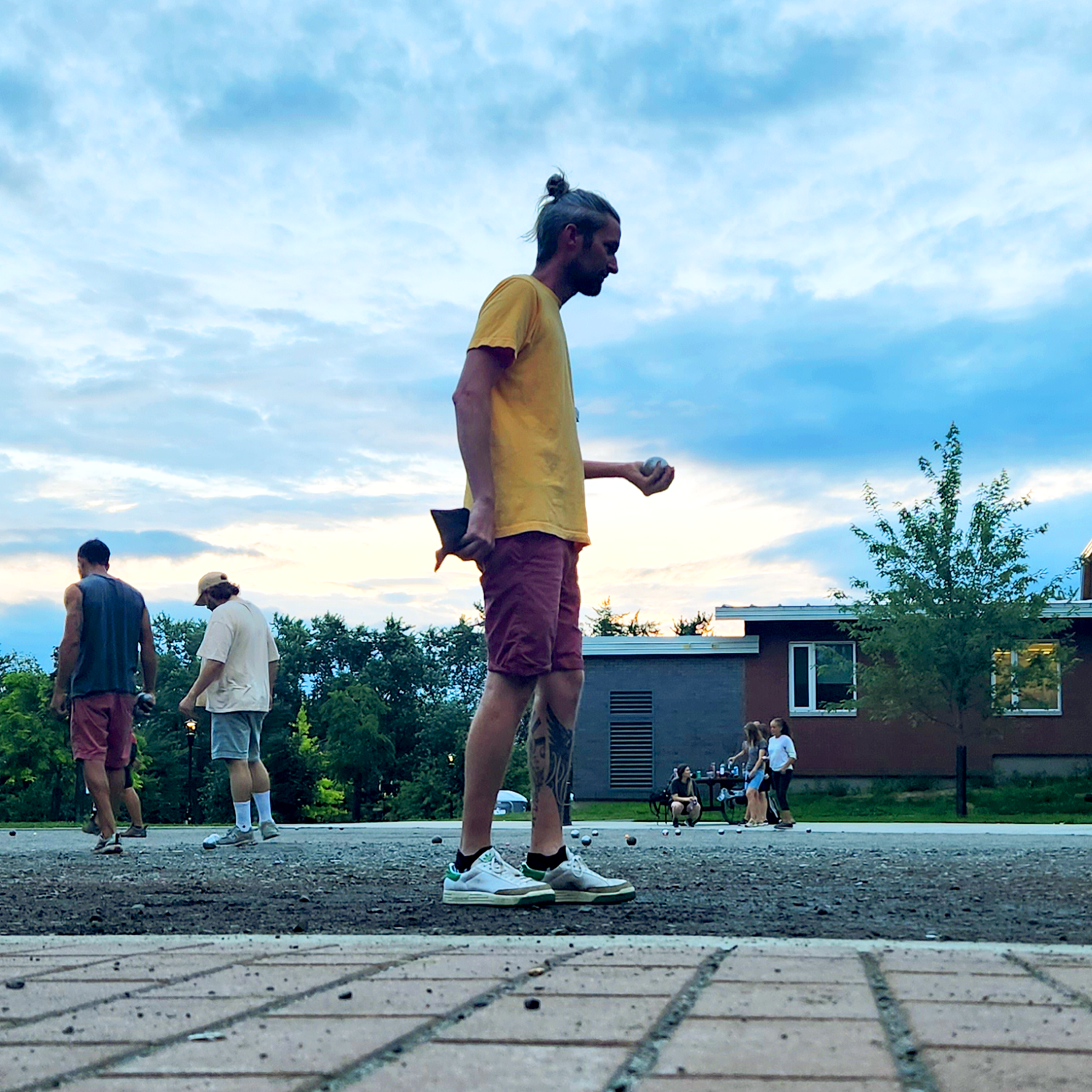
Start
Start with your arm relaxed and your shoulder low.
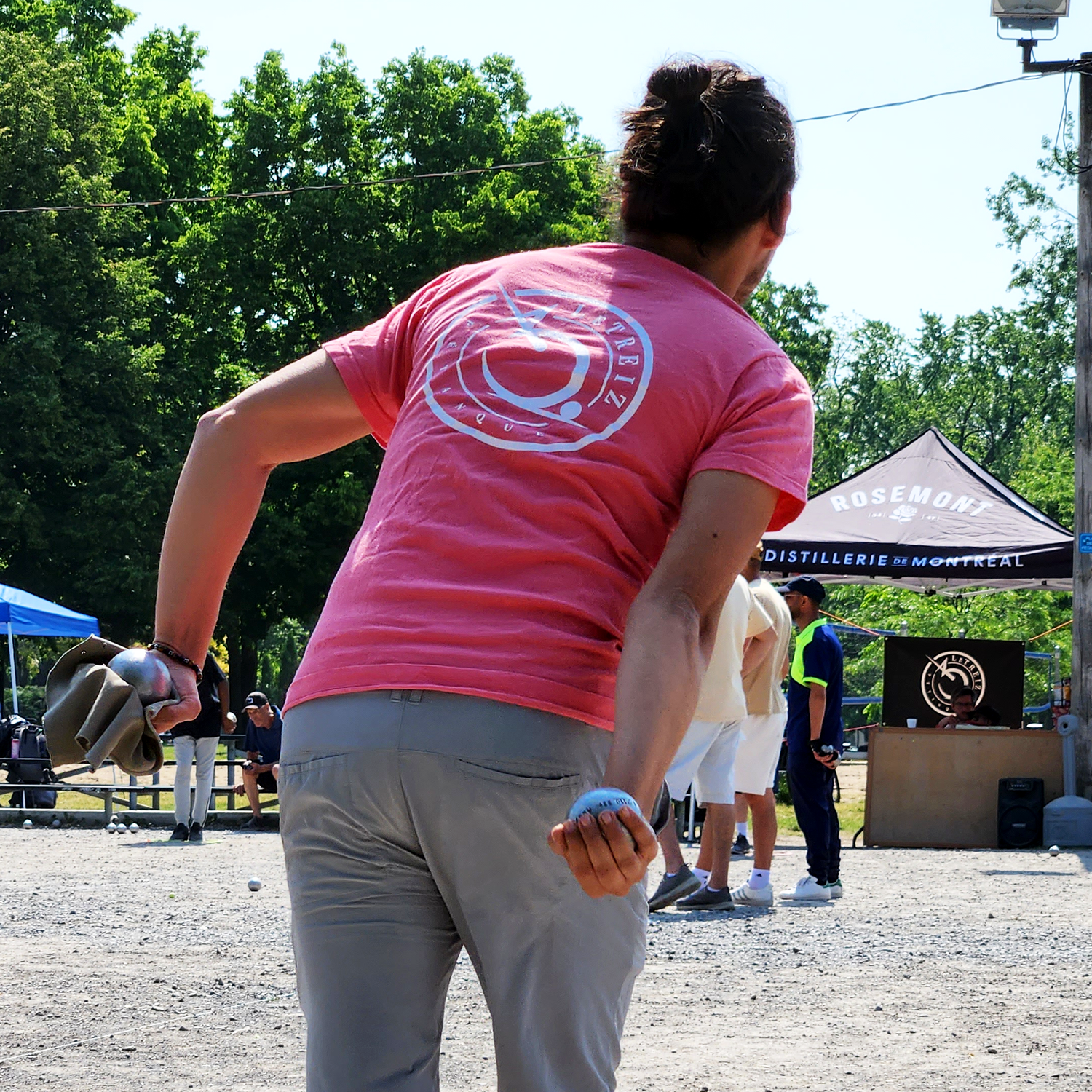
Run-up
When your arm reaches the level of your hip, swing it backward in an upward motion. The height depends on the flexibility of your shoulder.
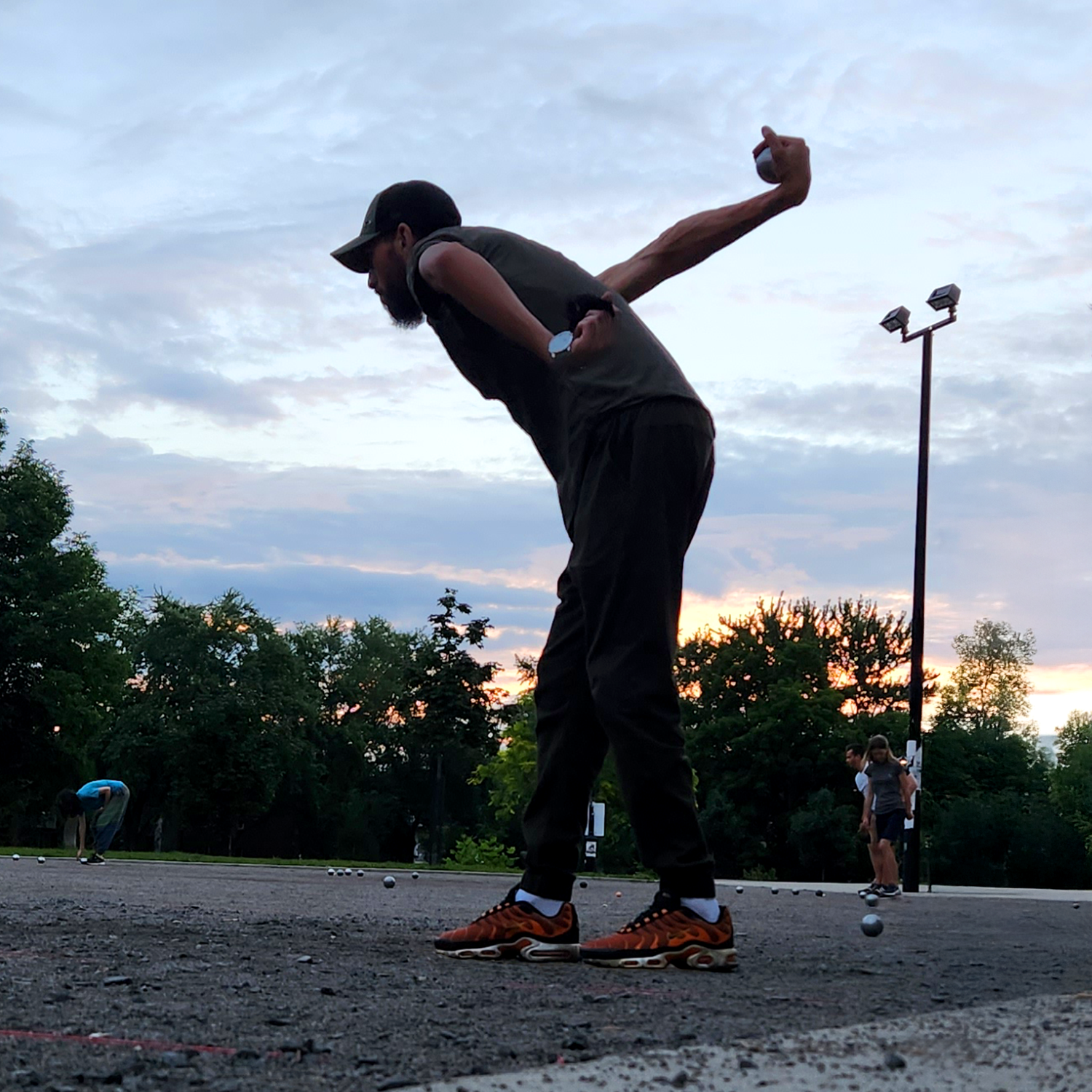
The Peak
When your arm is at its highest point, allow it to come down while gradually accelerating.
It is crucial to keep the arm as straight as possible during this movement.
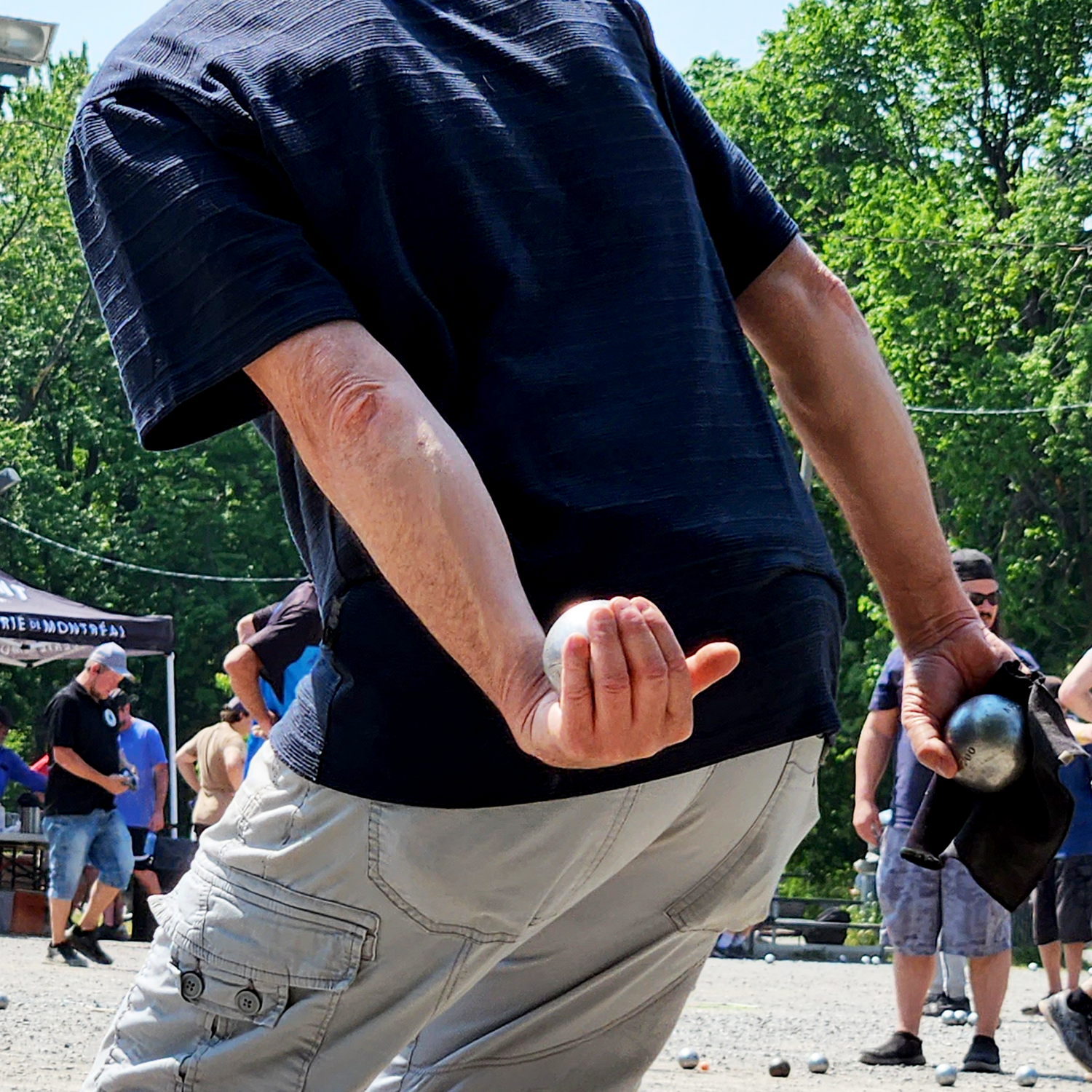
The Wrist
During or before executing the movement, flex your wrist naturally, without forcing it (the flexion will depend on your flexibility).
By following through with your wrist until the end, you will be able to impart more rotation to the boule, increasing your chances of keeping it in play after hitting another boule.
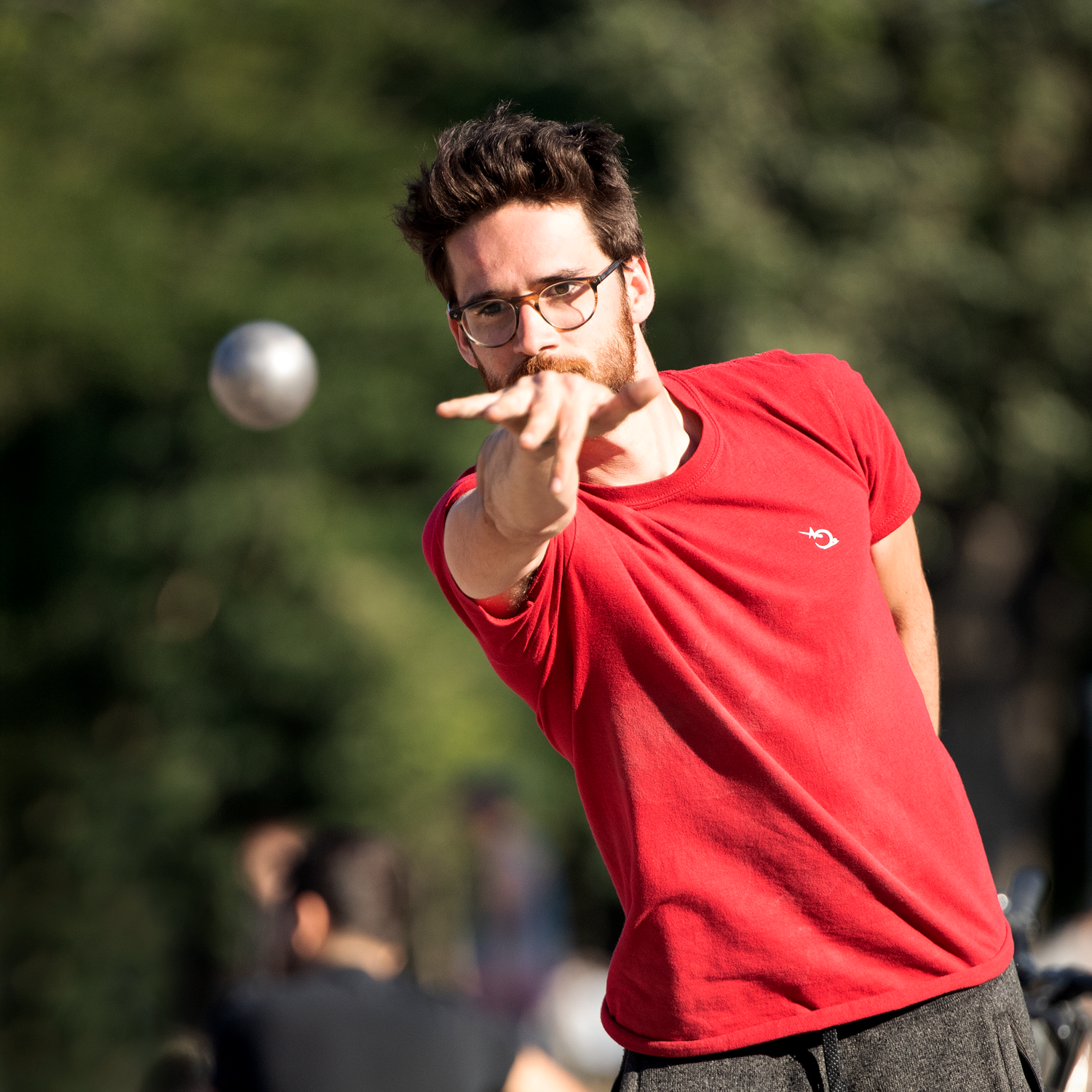
The Release
Quickly and completely open your hand at chest level to release the boule.
At the same time, slightly bend your knees so your thighs can absorb the energy generated at the moment of release.
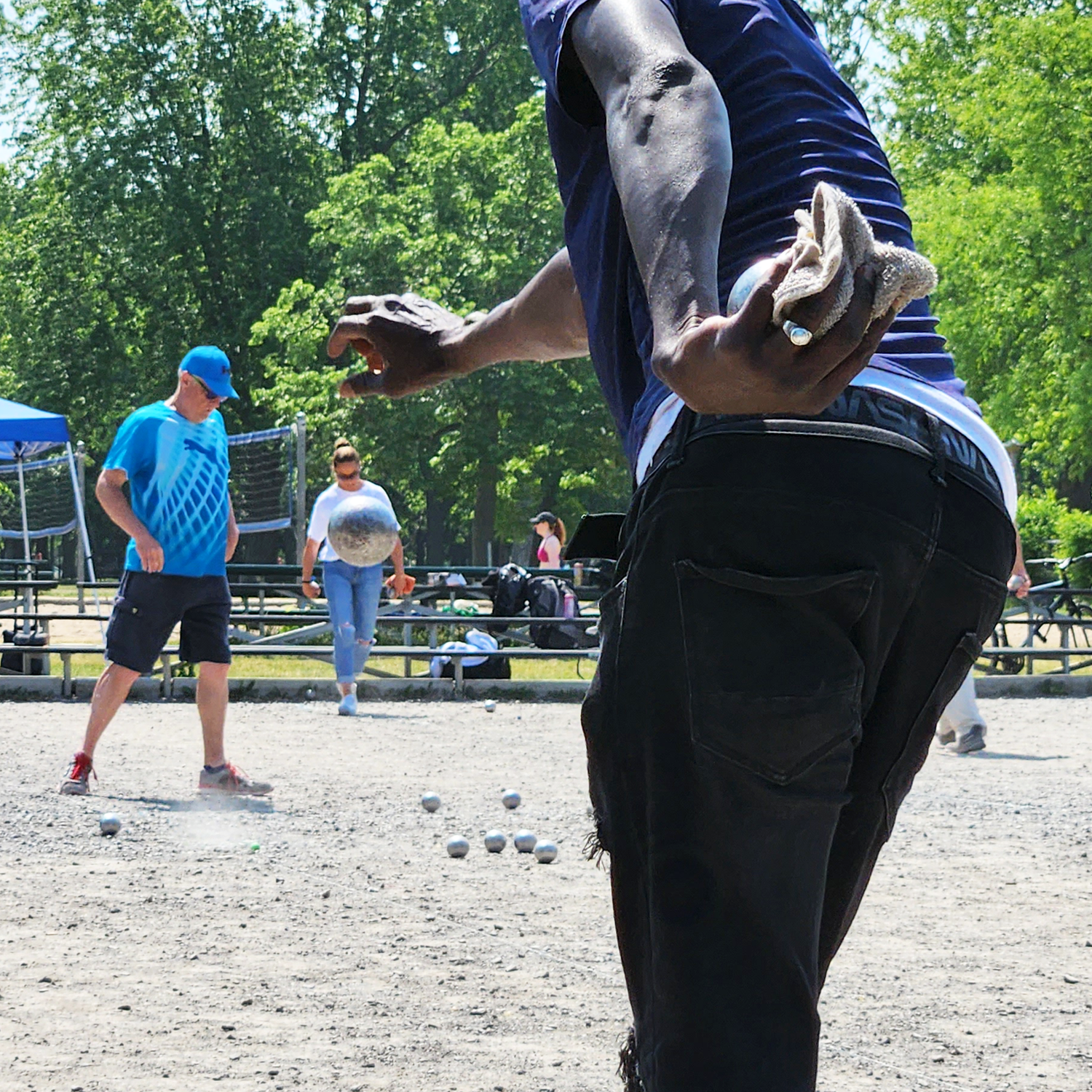
Warning ... A Common Trap
Many players release the boule too early, which causes several problems :
• The throw lacks curve.
• The trajectory becomes too flat.
• The boule drops to the ground prematurely, instead of hitting the targeted boule directly.
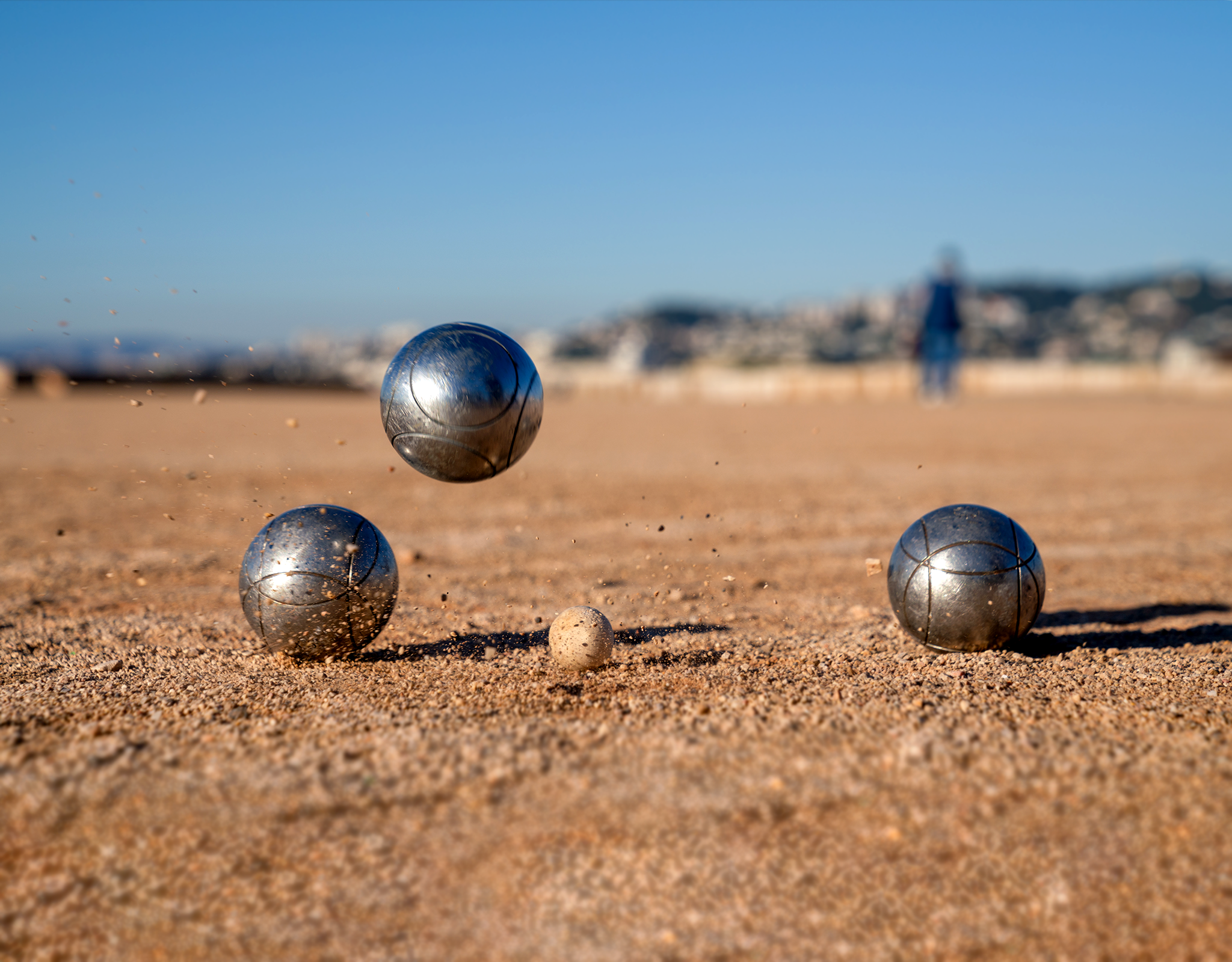
A good throw should follow a slightly curved trajectory, allowing the boule to stay in the air longer.
This increases your chances of hitting the opponent's boule directly, which is called "direct hit".
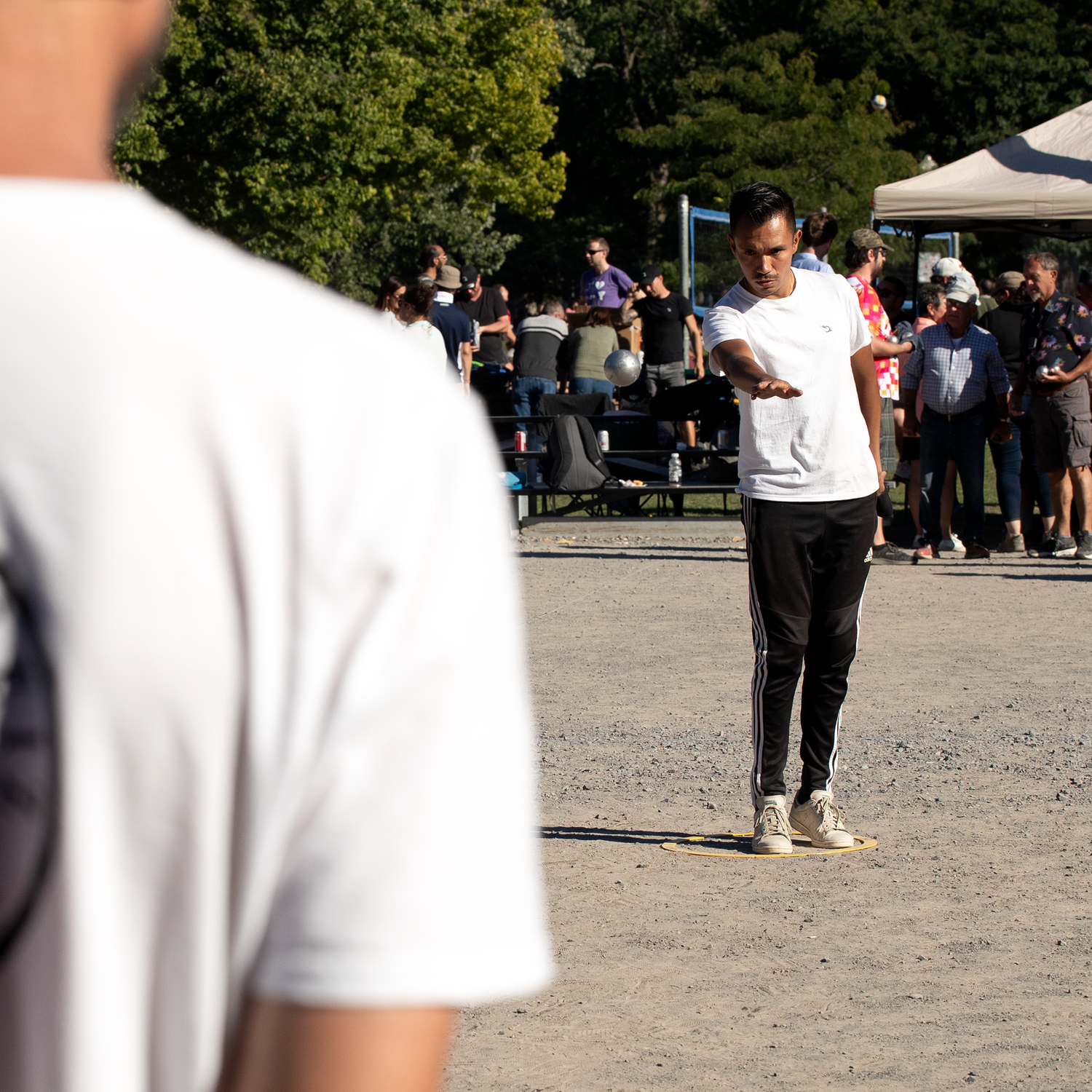
During the Throw
Avoid overthinking to prevent disrupting your movement. Focus mainly on the timing to release the boule from your hand at the right moment.
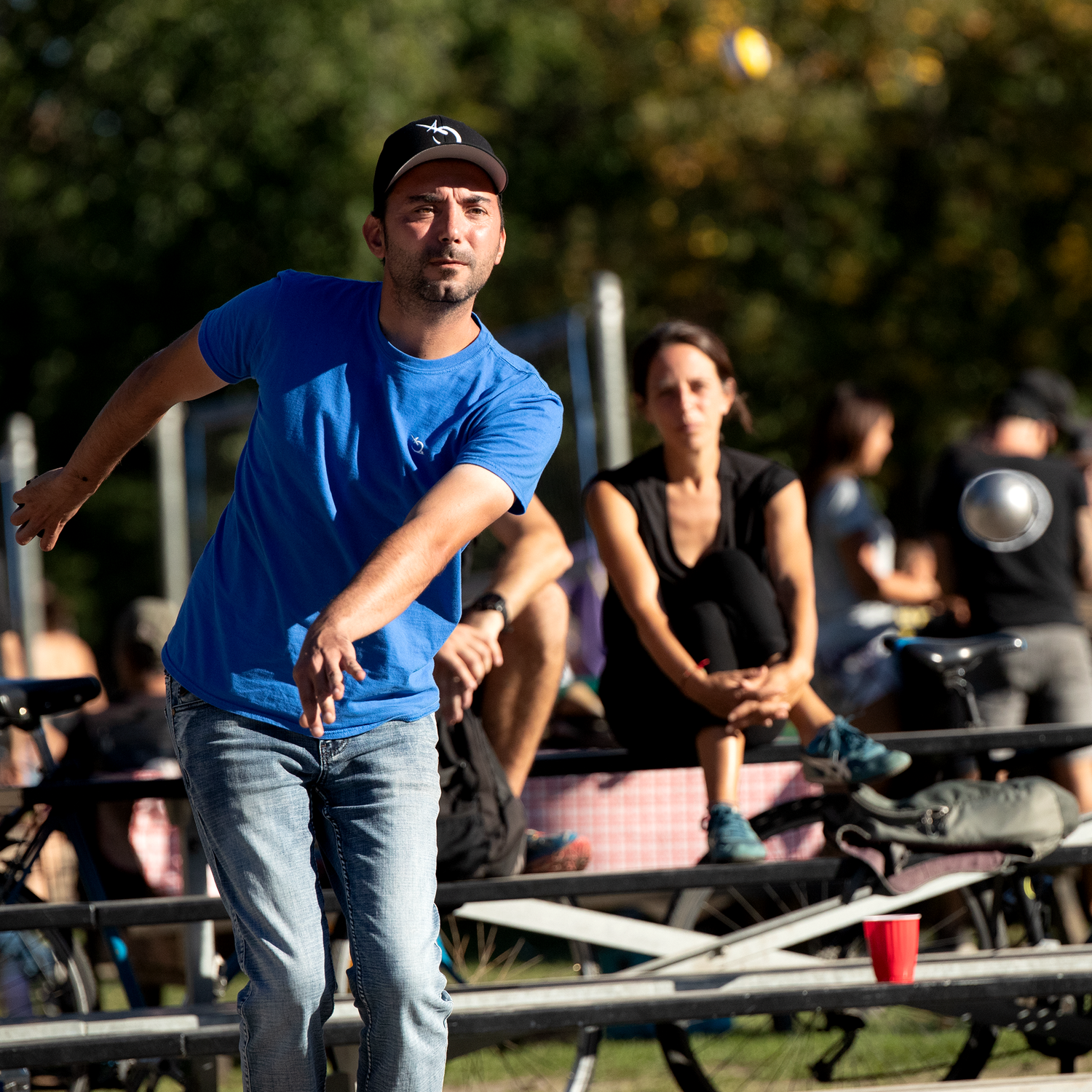
Remember
Don't force the movement. The goal is to be well-balanced and have a smooth and fluid motion.
A successful throw is the result of a natural and relaxed movement, not a sudden or forced effort.
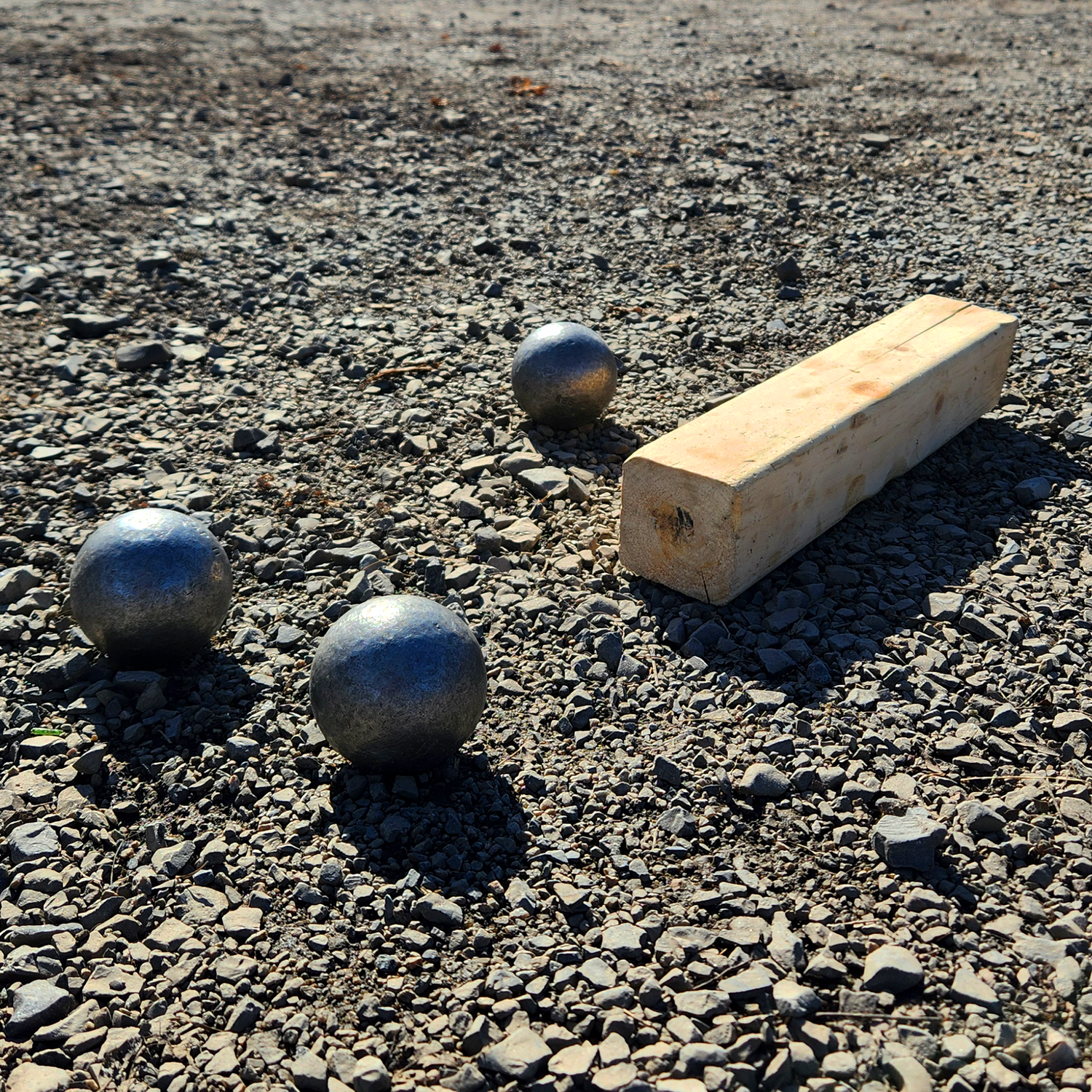
To Progress
Practice shooting boules placed behind another boule or a piece of wood. This will help you better control the curve of your throw.
The 3 Different Pointing Techniques
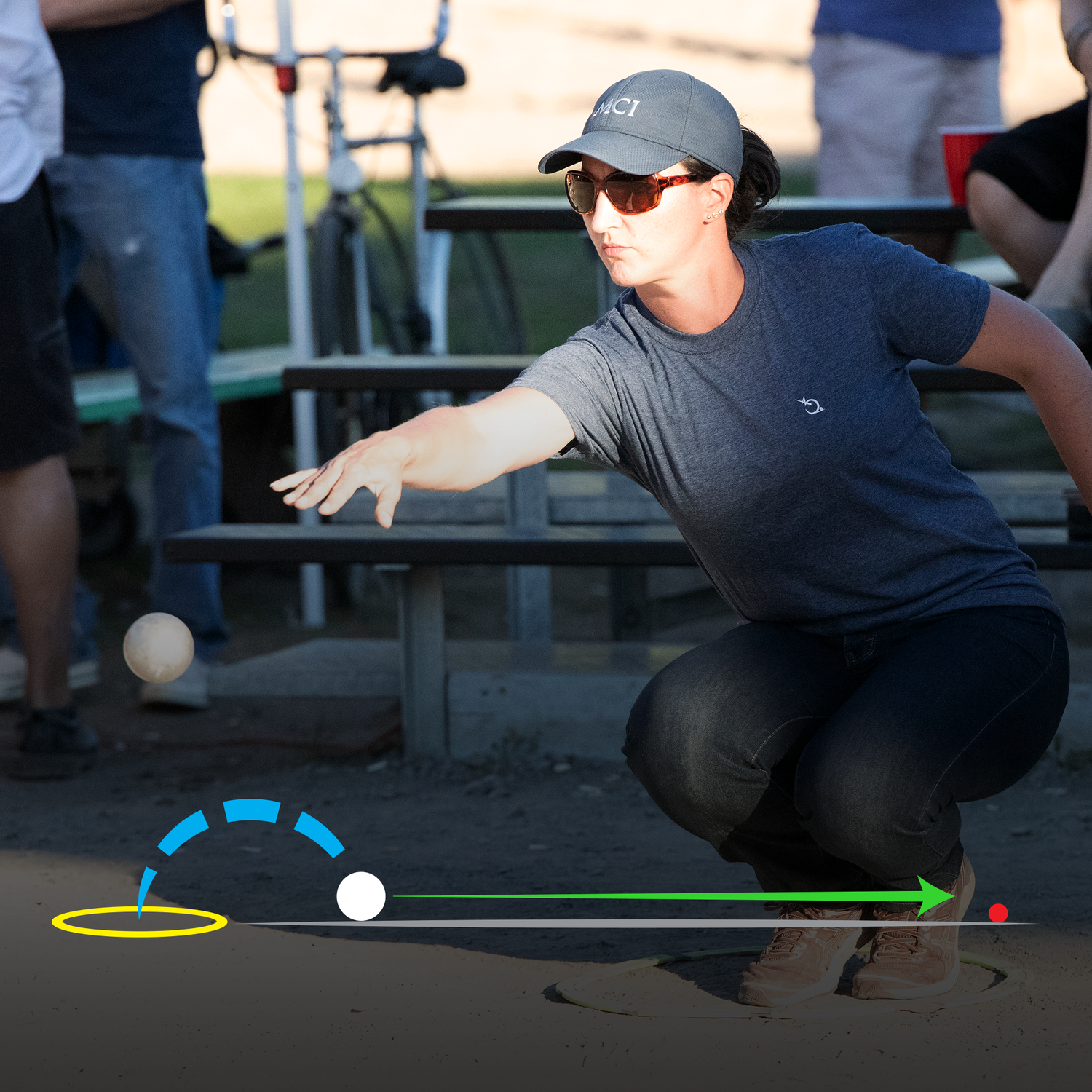
Caster
The boule lands within 3 meters, then rolls to its desired position.
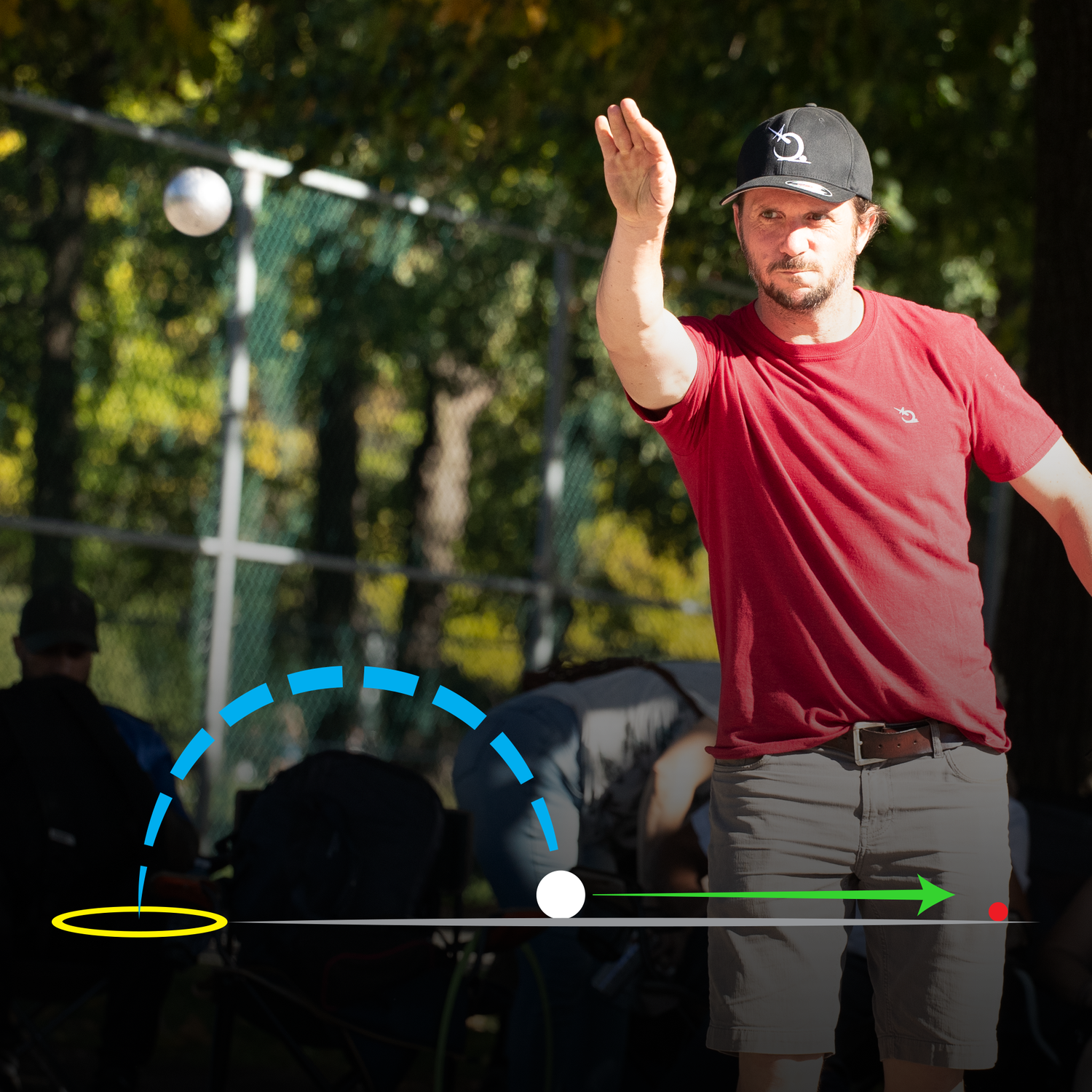
Half-lob
The boule rises to land approximately halfway between the circle and the jack.
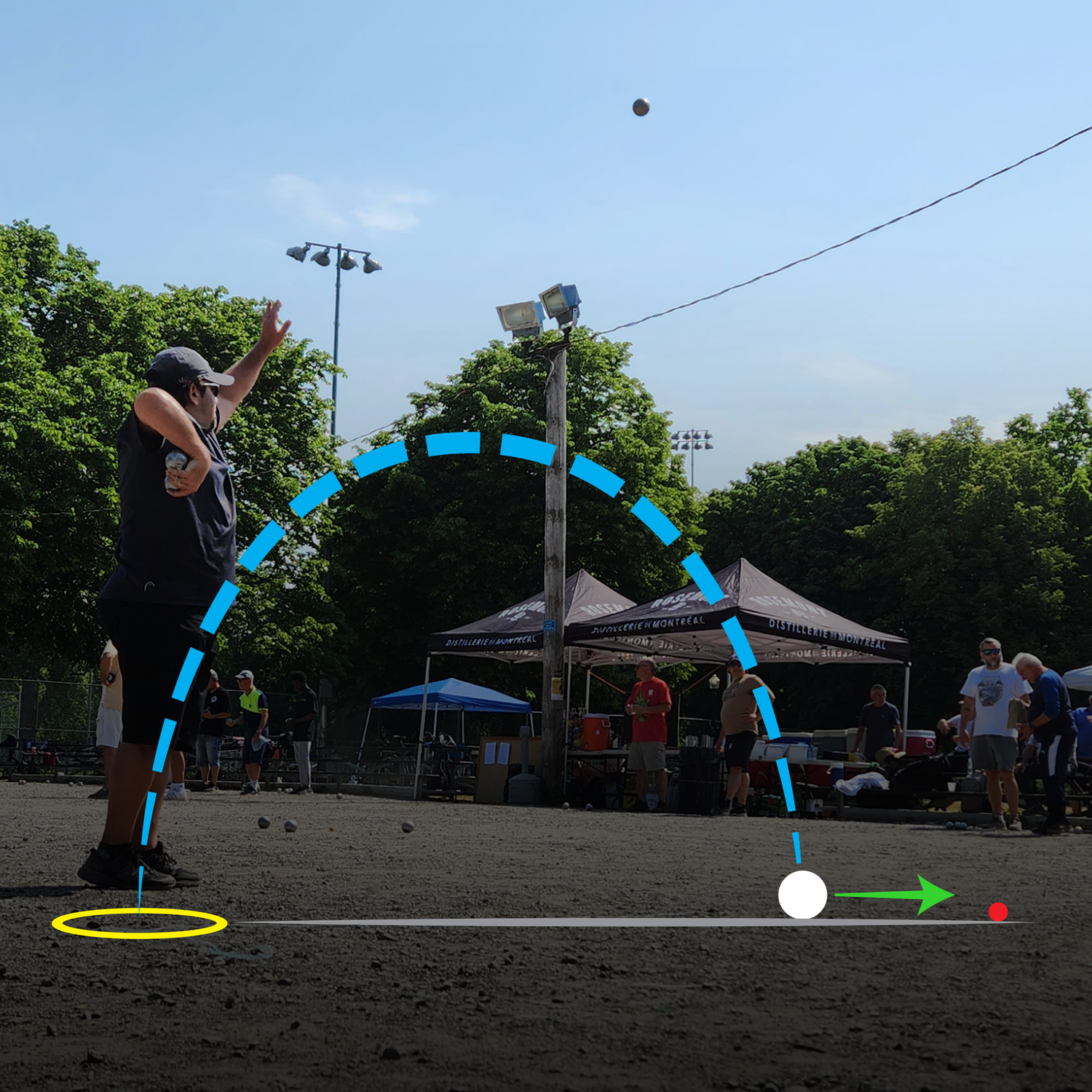
Lob
The boule rises very high so that it rolls very little upon impact with the ground. It lands within 2 meters of the desired final position.
Tips :
⭑ If you are faced with a situation where boules are placed near the jack and it is risky to play in their direction for fear of bringing the opponent's boules closer to the jack, you can opt for this technique. This involves passing over the boules in play. However, it is particularly difficult to master and carries some risks.
The Effects
In petanque jargon, when we send a boule with spin, we refer to it as "turning the boules". Mastering this technical aspect can give you a significant advantage in several game situations.
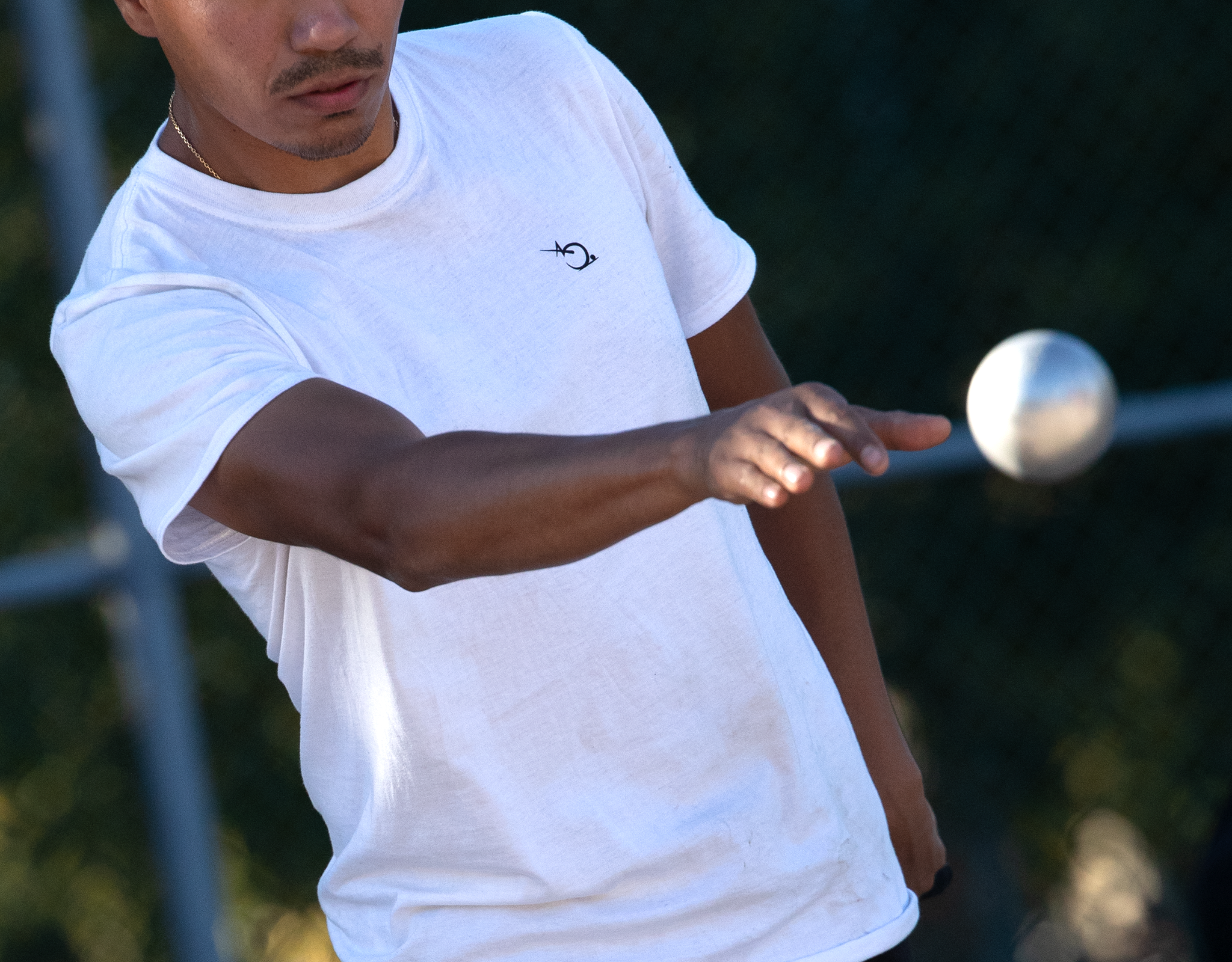
Giving spin to the boules in petanque : Mastering the art of "turning the boules".
The Lateral Effects
Take, for example, the "right-left" or "left-right" effects. These effects are often performed in a "half-lob or "lob", and allow you to cleverly avoid certain obstructing boules placed in the middle of the field that you don't want to hit.
They are also very useful for landing in a safer area of the game, especially on surfaces where the field can cause unpredictable bounces. By analyzing the field, you can identify areas where boules are likely to react poorly upon impact and adjust your play accordingly.
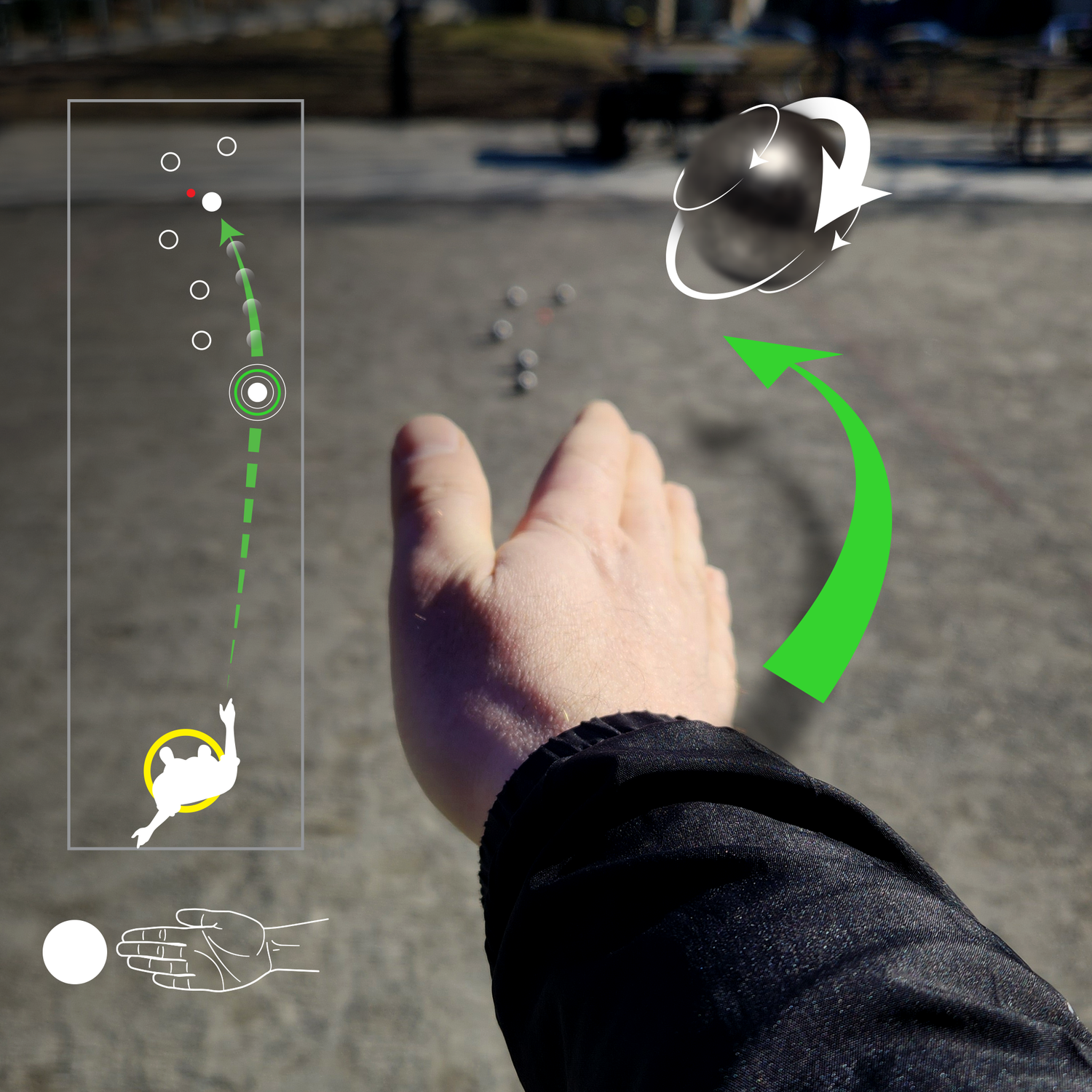
Turning the Boules to the Left
*Right-handed player example in the image.
• The right-handed player should release the boule from the inside of the hand, with the thumb pointing upward.
• The left-handed player should release it from the outside of the hand, with the thumb pointing downward.
Tips :
⭑ We highly recommend watching Sylvain Dubreuil’s excellent YouTube video titled "26 Pétanque - Tourner la boule à gauche" (26 Petanque - Turning the boule to the left), in which he shares 3 great tips for performing the movement correctly.
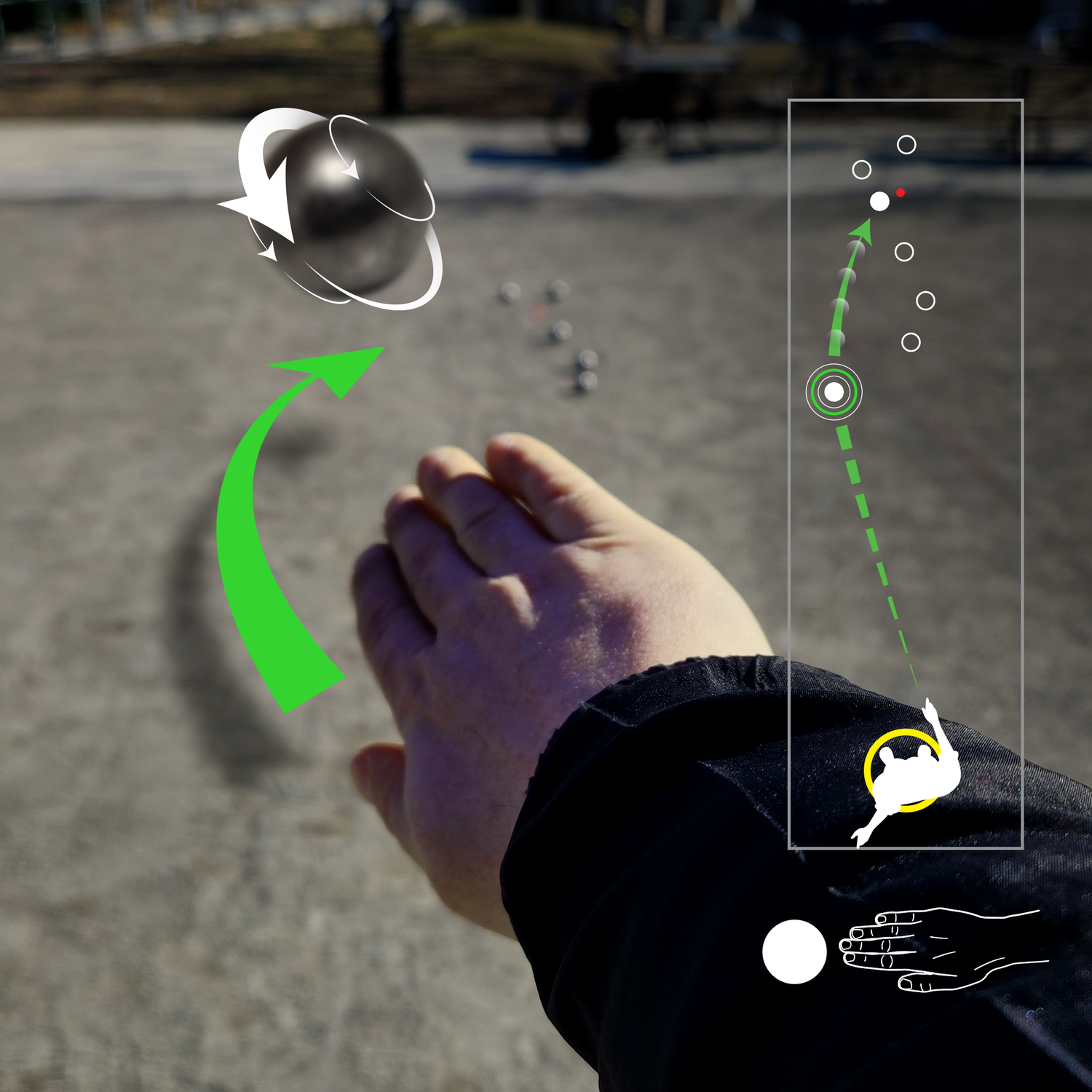
Turning the Boules to the Right
*Right-handed player example in the image.
• The right-handed player should release the boule from the inside of the hand, with the thumb pointing upward.
• The left-handed player should release it from the outside of the hand, with the thumb pointing downward.
Tips :
⭑ We highly recommend watching Sylvain Dubreuil’s excellent YouTube video titled "26 Pétanque - Tourner la boule à droite" (26 Petanque - Turning the boule to the right), in which he shares 3 great tips for performing the movement correctly.

The 3 Key Points to Succeed in Your Movement.
1. Shoulders position :
• Keep your shoulders straight.
• Face the playing area.
2. Hand and wrist position :
• Adopt the correct position from the beginning of the movement.
• Maintain a firm but relaxed grip.
3. Execution of the movement :
• Perform a circular motion (similar to a flick of the steering wheel).
• Follow through after releasing the boule.
• Assurer un mouvement fluide et continuous movement.
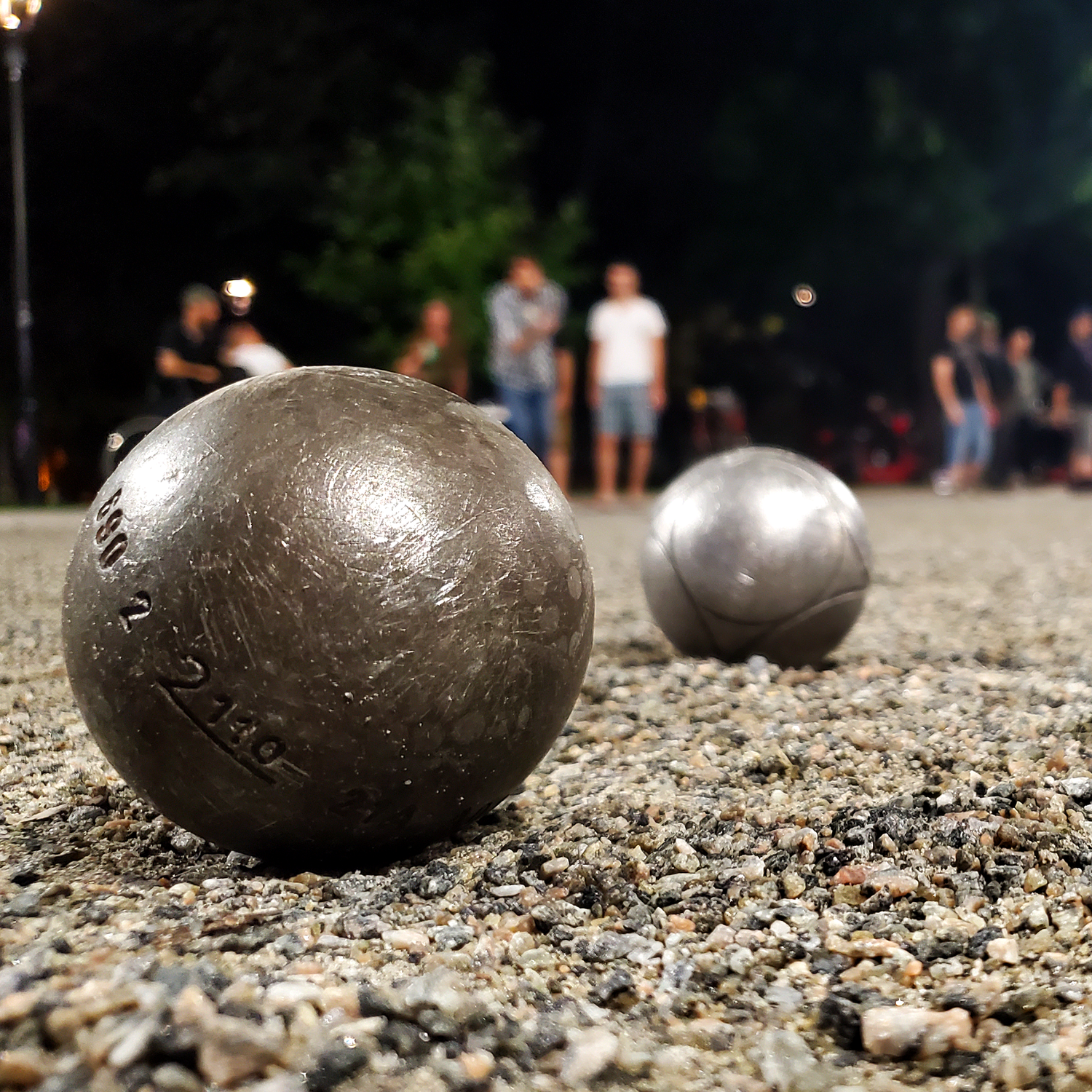
Practical Tips
To master effect effectively, practice is essential.
Before starting a game, we recommend that you :
• Throw a few boules with a clockwise spin, then with a counterclockwise spin.
• Carefully observe the trajectories of the boules after they make contact with the ground.
Important :
Boules can react differently depending on the temperature and the type of surface. This simple exercise will help you adjust your game accordingly.
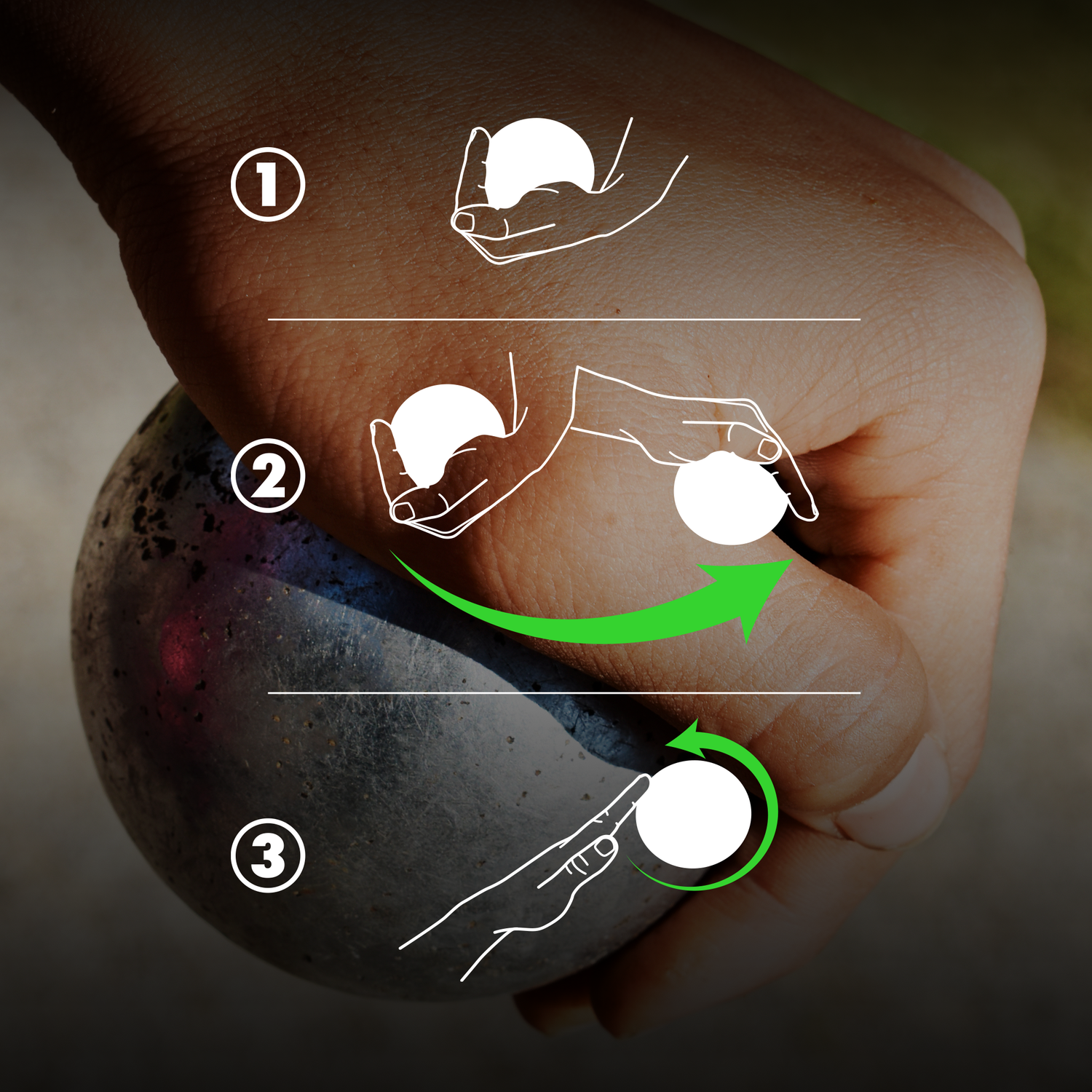
Backspin (Retro Effect)
Backspin (retro effect) helps to slow down the rolling of the boule after it makes contact with the ground. When executed correctly, this spin can even "stop" the boule on the ground after impact.
Technical execution :
1. Break the wrist sharply at the beginning of the movement.
2. Perform a quick flick of the wrist.
3. Release the boule from the tips of the fingers at the end of the movement.
